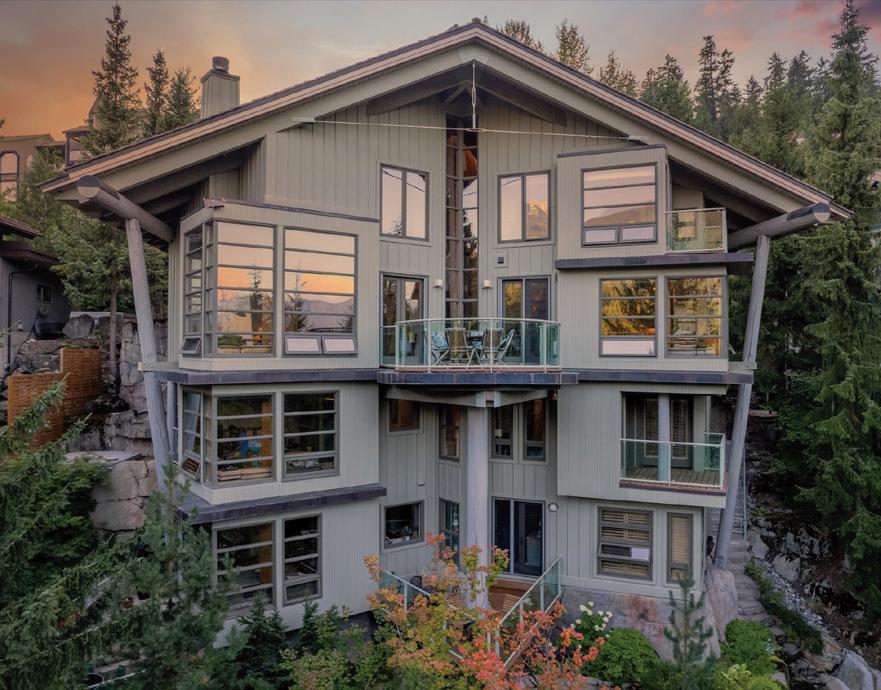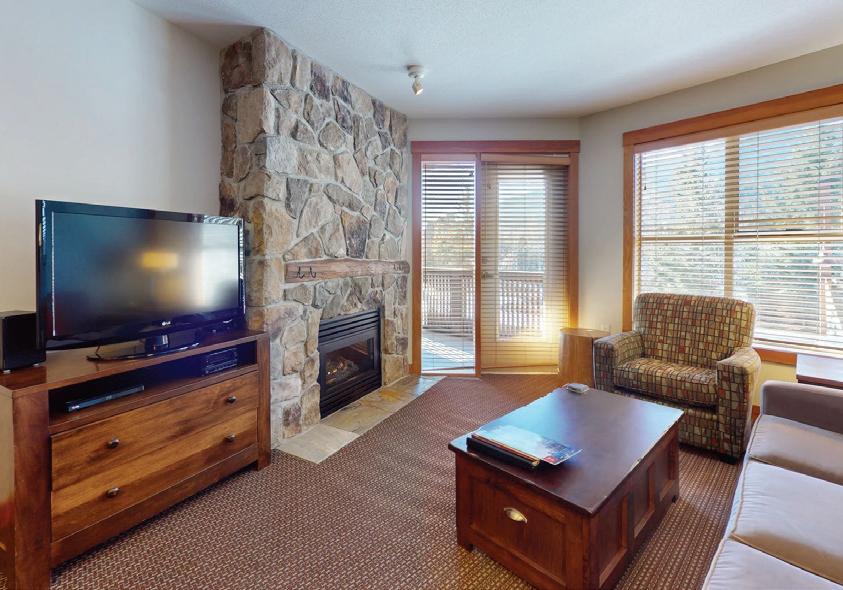






































































The West’s wetlands are struggling—and many are unmapped. - By Natalia Mesa – High Country News
With warmer temperatures in the forecast, Whistler’s resort ops crew is already hard at work preparing for summer.
Hike for Health returns this Father’s Day in support of health-care initiatives in Whistler, with an added focus on mental health.
Search-andrescue teams were busy this week, as two separate groups needed assistance—and one was still missing as of Pique’s weekly deadline.

32 28

The Village of Pemberton has a long list of advocacy items when it comes to this fall’s Union of BC Municipalities Convention.
Whistler Secondary School’s Grade 8 boys and Grade 8/9 girls each clinched a banner in the North Shore High School Mountain Bike Series last month.
The Audain Art Museum is set to welcome the 100-painting “Tom Thomson: North Star” exhibit on June 29.
COVER I get pretty hot about the wetlands, even when it’s cold. Beavers are amazing! - By Jon Parris // @jon.parris.art














Publisher SARAH STROTHER - sstrother@piquenewsmagazine.com
Editor BRADEN DUPUIS - bdupuis@piquenewsmagazine.com
Sales Manager SUSAN HUTCHINSON - shutchinson@piquenewsmagazine.com
Production Manager AMIR SHAHRESTANI - ashahrestani@piquenewsmagazine.com
Art Director JON PARRIS - jparris@piquenewsmagazine.com
Advertising Representatives
TESSA SWEENEY - tsweeney@wplpmedia.com
GEORGIA BUTLER - gbutler@wplpmedia.com
Digital/Sales Coordinator KATIE DOUGLAS - kbechtel@wplpmedia.com
Production - production@piquenewsmagazine.com
Arts Editor ALYSSA NOEL - arts@piquenewsmagazine.com
Reporters
SCOTT TIBBALLS - stibballs@piquenewsmagazine.com
RÓISÍN CULLEN - rcullen@wplpmedia.com
DAVID SONG - sports@piquenewsmagazine.com
ALYSSA NOEL - arts@piquenewsmagazine.com
LIZ MCDONALD - emcdonald@piquenewsmagazine.com
Classifieds and Reception - mail@piquenewsmagazine.com
Office and Accounts Manager HEIDI RODE - hrode@wplpmedia.com
Contributors G.D. MAXWELL, GLENDA BARTOSH, LESLIE ANTHONY, ANDREW MITCHELL, ALISON TAYLOR, VINCE SHULEY
Founding Publishers KATHY & BOB BARNETT
08 OPENING REMARKS This National Indigenous History Month, and every month, we should face the hard truths head on, writes editor Braden Dupuis.
10 LETTERS TO THE EDITOR In this week’s letters, a Whistlerite asks: Who will support Whistler when the locals are forced out?
13 PIQUE’N YER INTEREST The pursuit of knowledge is intrinsically a valuable endeavour, writes David Song—and museums should be free.
46 MAXED OUT Does a recent verdict south of the border represent a light at the end of the tunnel?
at mediacouncil. ca or call toll-free 1-844-877-1163 for additional information.
This organization replaces the BC Press council (and any mention of it). ISSN #1206-2022
Subscriptions: $76.70/yr. within Canada, $136.60/yr. courier within Canada. $605.80/ yr. courier to USA. GST included. GST Reg. #R139517908. Canadian Publications Mail Product Sales Agreement #40016549.
25 THE OUTSIDER Ten years on from an epic adventure to Tajikistan and back, Vince Shuley throws it back to the Fedchenko.
30 FORK IN THE ROAD Learn more about the wonderful world of slime moulds, thanks to Glenda Bartosh and the Whistler Naturalists.
36 MUSEUM MUSINGS Revisiting a literary classic in Skiing with Al Raine




We’ve got you covered.
Pick up the latest issue of your favourite read in Whistler.


ONE OF THE first assignments I ever went on as a rookie reporter way back in 2012 was to attend Truth and Reconciliation testimony hearings in Prince Albert, Sask.
Over three days in February, survivors recounted the abuses they suffered in Canada’s residential school system.
Their accounts would help form the Truth and Reconciliation Commission of Canada’s executive summary and accompanying 94 “calls to action” released in June of 2015.
 BY BRADEN DUPUIS
BY BRADEN DUPUIS
Taking it all in was a harrowing, emotional experience, even as a mostly-detached, non-
None of it was really news to me, even back then—I distinctly remember learning about Canada’s Indian residential school system growing up in the public school system—even if hearing about the associated trauma firsthand took it all to a more cerebral level.
But I was shocked to learn, upon moving to B.C., that many Canadians remained blissfully ignorant of the residential school system and its long-lasting effects.
Many people who went to school in Ontario, I found, did not learn about residential schools growing up.
Granted, this was before the discovery at Tk’emlúps in 2021 heightened awareness around residential school atrocities; before Canada had a dedicated National Day for Truth and Reconciliation—but even today, there are still those who don’t seem to know or understand the full truth.
Recent discourse has centred around Tk’emlúps, and its claim in 2021 that the remains of 215 children, all students of the Kamloops Indian Residential School, were confirmed with the help of a groundpenetrating radar specialist.
It’s a shocking, eye-grabbing number, splashed across headlines nationwide—and
the claim attracted no shortage of critics.
Since then, skeptics and naysayers of all stripes have fallen over themselves demanding hard evidence and proof, with some going so far as to attempt to dig up the site themselves.
“Denialists entered the site without permission. Some came in the middle of the night, carrying shovels; they said they wanted to ‘see for themselves’ if children are buried there,” said a June 2023 report from Kimberly Murray, the independent special interlocutor for missing children and unmarked graves and burial sites associated with Indian Residential Schools.
I can’t for the life of me imagine what might compel someone to go to a suspected mass grave in the dead of night in search of some sort of backwards, macabre vindication or proof—but I strongly suspect it has something to do with their preferred online echo chamber.
Which is not surprising, but it is distressingly sad. We shouldn’t need to see the physical bodies of dead children to accept the horrific legacy of residential schools.
Because, as noted, it is not exactly news—
residential schools altogether. There are “thinkpieces” out there, not worth noting by name, which discount the entire Truth and Reconciliation Commission and all of its findings, claiming the accounts shared by survivors were never fact-checked or cross-referenced, that no children ever died, that residential schools were in fact a pleasant experience for most First Nations people.
Seeing these pieces land in my inbox, reading them from the perspective of my Saskatchewan upbringing, makes my stomach churn.
My Ontario friends may not have learned about residential schools growing up, but what I learned in the Saskatchewan public school system was anything but pleasant.
Why was it part of our curriculum and not theirs?
Maybe because the effects are so much more visible in Saskatchewan, where Indigenous people made up 17 per cent of the population in 2021 (second only to Manitoba’s 18.1 per cent. In Ontario, Indigenous people made up just 2.9 per cent of the population in
in Canada between 1831 and 1996, with the stated goal of “killing the Indian in the child.”
“The fact is that if you wish to educate the children you must separate them from their parents during the time they are being taught,” secretary of state for the provinces Sir Hector Langevin said in a speech to Parliament in 1883.
“If you leave them in the family they may know how to read and write, but they will remain savages, whereas by separating them in the way proposed, they acquire the habits and tastes … of civilized people.”
The Canadian government of the day did not view First Nations people as human beings, and its negligence at said schools is well-documented in the history books.
In 1907, medical inspector for Indian Affairs, Dr. P.H. Bryce, found “extremely high rates of death from tuberculosis in the schools,” deeming their condition a “national crime.”
It’s not even just about those kids who didn’t come home—many of those who did were robbed of their ability to properly parent, or became mired in addiction as a way to
It is estimated 150,000 children attended residential schools, and according to the Truth and Reconciliation Commission, at least 1,300 died (but poor record-keeping on the part of the churches and government means we will never know the true number—the TRC estimates it is as many as 6,000).
it’s all right there at nctr.ca/records/reports, where published reports have sat for the better part of 10 years detailing the findings of Canada’s extensive, independent commission into it all.
Tk’emlúps and its specific claim of 215 missing children predictably became a lightning rod for the historic controversy, as media, Pique included, repeated the shocking claim as originally reported by the band.
Three years later, some now seek to use the absence of bodies to discredit the legacy of


Ski-in/ski-out on Blackcomb Mountain, Aspensisone of the bestlocations in Whistler! This brightand renovated 2-bed/2-bath condo has afully equipped kitchen, air conditioning and agas fireplace. Thecomplexhas three hot tubs, a heatedoutdoor pool,anexercise room, and aski valet.Unlimited owneruse with the option to do nightly rentals Asking price-$1,815,000 426-4800 Spearhead Drive
2021, while here in B.C., it was 5.9 per cent).
The debate over the physical existence of 215 bodies on the site of T’kemlups is sadly little more than a morbid distraction. It is estimated 150,000 children attended residential schools, and according to the Truth and Reconciliation Commission, at least 1,300 died (but poor record-keeping on the part of the churches and government means we will never know the true number—the TRC estimates it is as many as 6,000).
More than 130 residential schools operated
forget what happened to them. Their trauma becomes their kids’ trauma, becomes their grandkids’ trauma.
Knowing what we know about the residential school system—have known for literally more than 100 years—it is frankly disgraceful to see people try to downplay it all in 2024.
This National Indigenous History Month, and every month, we should face the hard truths head on.
Learn more at slcc.ca and nctr.ca. n











I read with interest the article regarding increased fines for those who flaunt the short-term rental bylaws, from $1,000/day to $3,000/day ( Pique , May 24, “Whistler looks to flex new powers…”).
The Resort Municipality of Whistler (RMOW) is quick to jump to the corporate hospitality industry’s defence when it comes to protecting its profits. All the while some locals are having difficulties keeping up with the everincreasing property-tax burden… many are leaving Whistler for good.
But where is the RMOW when it comes to protecting the homeowner (and indirectly renters) from the ever-increasing tax burden? I understand completely why short-term rentals (such as Airbnb) are counter-productive to a healthy long-term rental market, and agree we need to curtail that activity. But why not permit short-term rentals as the City of Vancouver has… if you live in your home, permit that homeowner to rent out a room occasionally to help “make ends meet.”
Why hasn’t Whistler pursued the provincial “Empty Home Tax” as many other B.C. municipalities have embraced?
On our short street here in Alpine Meadows, of 14 properties: Four are full-time



“Imagine a future where ‘full-time locals’ have been aged-out, priced-out and taxedout of an existence in Whistler.”-
JIM BROWN
Write to us! Letters to the editor
piquenewsmagazine.com before 11 a.m. on Tuesday for consideration in that week’s paper.


residents, five are rental homes and five are empty the majority of the year (maybe one to two months’ occupancy). What do these “empty” properties contribute to the Whistler economy? Property taxes? All homeowners pay property tax, but those who live here (full-timers and renters) also buy groceries, eat at restaurants, shop at the stores all year long, keeping the economy buoyant during the shoulder season when the tourist traffic is low.
In the least it would be nice if these mega-homes had rental suites providing decent accommodations for the very people who provide the services to the locals and tourists. But the newly built homes in the past two to three years have very few rental suites, if any.
Imagine a future where “full-time locals” have been aged-out, priced-out and taxedout of an existence in Whistler. Who is left to support the expensive restaurants, grocery and retail stores in the shoulder season? The minimum-wage hospitality workers? Whistler will become an “off-season” ghost town like Vail, Colo. (been there, saw it).
The “Empty Home Tax” in other jurisdictions is raising funds to build affordable rental housing in their areas… much-needed rental housing.
Ironically, Whistler is desperate for more rental housing… too bad our municipal officials don’t use all the tools available to them.
JimBrown // Whistler n


256 -4429 SundialPlace


$398, 000
•Enjoy beautiful Blackcomb views!
•800 SF,2level lofted cor ner suite
•Vaulted ceiling, f/p, sleeps 6, kitchen
• Central village Phase 2, steps to lifts

Sale 604-723-3525 js@jennifersale.com

manderson@sutton.com
16 -1005



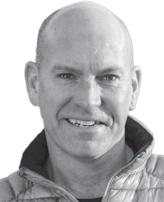
Whistler Alpine Villa Ltd. (WAV) is seeking a Resident Caretaker (RC) for its complex located in Whistler Creekside The position is available August 1, 2024. The complex, built in 1965, contains 52 multi-storey apartment units in 8 building modules. WAV is a provincially incorporated, not for profit corporation. It is not a strata-title property. One three-level unit is reserved for the RC to live in.
Th e RC Is re sp on sib le to en su re al l in sp ec ti on s , re pa ir s an d maintenance is carried out in a timely, competent manner, and reports to the WAV Board of Directors who are, in turn, responsible to the shareholders that use the units.
The functions of the RC include a wide variety of hands-on tasks necessary to ensure all aspects are carried out at various times of the year as seasonal opportunities permit. The configuration of the co mp le x re quires ensu rin g win te rtime sa fe access an d operational functioning due to the risks posed by severe cold, snow, and ice. In springtime routine cleaning includes clearing away forest debris to reduce fire hazard and optimize the overall ap pe ar an ce Su mm er ti me is whe n ma jo r cl ea ni ng , in sp ec ti on, repairs, maintenance, and painting of a designated building module takes place. The RC also arranges for annual chimney cleaning, ro of re pa ir, fire ex ti ng ui sh er s er vi ce , sm ok e al ar m te st in g an d arborist work as needed with select contractors certified to perform the different aspects of that work.
The successful candidate m ust (at a mi nim um ) hav e st ro ng fundamental carpentry and construction skills, and be familiar wi th basic plumbing and electrica l work Exp eri enc e erect in g and working from scaffolding is an asset. This position frequently requires ladder work Proficiency in outdoor painting and the ability to safely work on roofs is essential. This position is a physically demanding job. Clearing snow from and sanding of pathways in winter is a regular task. As RC, responding to emergencies w hen ev er th ey oc cu r is part o f the jo b. Mo st wo rk is don e single-handedly
The successful candidate must be personable and possess the n ece ssary skills to comp lete all as pe cts of th e jo b. This is an e xcellent opportunity for long-term em pl oym ent. To th e righ t candidate, we are prepared to offer an excellent compensation package averaging between $70 - $80k annually, that includes a generous vacation allowance, a full medical and dental benefits plan and free accommodation in a renovated, three-level ~1,000 sq. ft. unit in the complex
To be considered for this position, in addition to the necessary skills, candidates must, at a minimum, pass a criminal background ch ec k, a c re dit re port, ver if icat ion of appl ic ab le educatio nal accomplishments and provide at least two favourable references. If you have the necessary skills and are interested in lear ning more about this opportunity, please forward your resume and contact information together with a covering letter and at least two(2) letters of reference to the Whistler Alpine Villa Ltd. hiring committee at the following email address: hiring@whistleralpinevilla.com
Please note: All responses to this solicitation will be acknowledged upon receipt. Only candidates who demonstrate they have the necessary skills to carry out the scope of work involved in this position will receive further contact. Shortlisted candidates will be contacted by a member of the WAV hiring committee. Thank you for your interest.






8271 Alpine Way
•3 Bedrooms+ Study, 2Bedroom
•Quiet lotwithloads of sunlight &fabulousmountain views •Homeand property are meticulously maintained $2,999,000


Welcometo7206 FitzsimmonsRoadNorth;anexcellent West facing family home locatedindesirable WhiteGold, Whistler’s favouritewalkto everything neighbourhood! Situated on afantastic,flat 9,800 sq/ft, flatlot that offers great potential. This property is very quiet, peaceful &private and has wonderfulfront &backyard optionswhere thereisample room to BBQ, entertain,baskinthe sunshine,gardenorsimplysit back,relax andtakein your surroundings from this very special locationwithinWhistler’s “indemand” neighbourhood.Ifyou have alovefor theoutdoors therereally is no better placefor youtocallhome. 7206Fitzsimmons Road North, White Gold $3,995,000



Dave







The Squamish-Lillooet Regional District (SLRD) Statements of Financial Information for 2023 will be presented to the Board at the June 26, 2024 SLRD Board meeting, which starts at 10:30 am
SLRD Board meetings are held in the SLRD Boardroom (located at 1350 Aster Street, Pemberton) and electronically Livestreaming of the meeting (and on-demand recording) will be available on the SLRD website at https://www.slrd.bc.ca/inside-slrd/meetings-agendas/watch-meetings
The reports will be available for public inspection (following the Board meeting) at the SLRD office during regular office hours. The audited financial statements are also available on the SLRD website: www.slrd.bc.ca



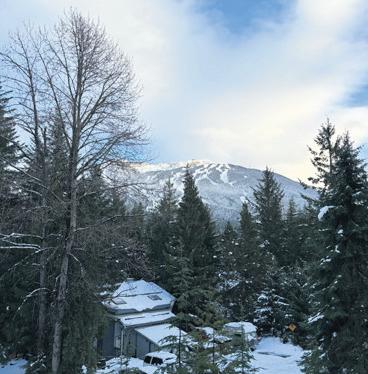




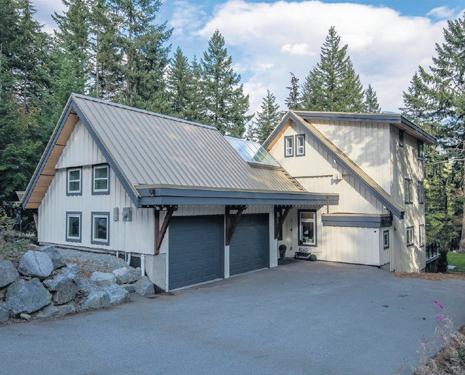









NEAR THE BEGINNING of May, I had the privilege of vacationing in Washington, D.C. with my parents. Despite being an American citizen, I’d never been to the U.S. capital and was excited to finally visit. Call me crazy, but spending a week in a bustling metropolis with
 BY DAVID SONG
BY DAVID SONG
dsong@piquenewsmagazine.com
high-rises and ballparks was actually a very nice break from the Whistler bubble.
At the top of my to-do list were both Smithsonian National Air and Space Museums: the flagship downtown location housing the Apollo 11 command module as well as the Steven F. Udvar-Hazy Center, home to Space Shuttle Discovery and an SR-71 Blackbird. These places had been on my bucket list since I was a child, and as John Turturro’s character quips in the movie Transformers: Revenge of the Fallen, it’s truly “a land of dreams” in there.
Quick tangent: the Blackbird spy plane entered service in 1966 and could fly across the United States from coast to coast in 64 minutes. That fact will never not be awesome.
When I began to help my folks plan our trip, I quickly discovered one extremely pleasant surprise: you can visit the Air and Space Museums and numerous other first-
class institutions, like the National Museum of Natural History, for free.
Free? In the capitalist empire of America? There’s no way, right?
Yes, way.
It was a memorable trip defined by dozens of hours spent gawking at iconic airplanes, storied spacecraft, dinosaur bones and artifacts from key moments in U.S. history. Not long after my return, I began wondering: do museums have to charge admission fees? Wouldn’t it be better for society if they didn’t?
If a museum is free, it immediately becomes a more attractive destination. More
geeks like myself) would get to immerse themselves in a wealth of enriching and engaging knowledge. These individuals would return again and again with their friends and families. Laypeople would inevitably get dragged in the door by their nerdy buddies and some of them will be impressed, further spreading the exhibit’s reputation through word-of-mouth.
This process ultimately creates a larger and more diverse community willing to support the museum, both financially and otherwise.
Furthermore, the pursuit of knowledge is intrinsically a valuable endeavour. It should not be limited to our flawed public school
[T]he pursuit of knowledge is intrinsically a valuable endeavour. It should not be limited to our flawed public school systems...
folks, especially tourists and people without a robust interest in a given subject, would consider dropping by. No longer would someone need to ask: “would this place be worth it?” They can show up and leave in 15 minutes if they get bored.
On the other hand, a certain portion of the population (i.e. aerospace and paleontology

systems, expensive universities and paywalled scientific journals.
At each of the museums I visited last month, there were hundreds upon hundreds of elementary and junior high-aged youths on site. Many had come from out of state on field trips. Not all were interested in the Blackbird or the T-Rex skeleton specifically, but all had the
chance to discover a new passion or upgrade their trivia game.
All of these kids had the opportunity to look at something substantial, rather than the vapid and algorithm-driven doldrums of social media.
Now: all of D.C.’s free museums are supported by the federal government. I’m cognizant of the fact that asking governments to fund more things isn’t always feasible, especially in jurisdictions with more immediate public needs. Each museum is also different: obviously, the Audain Art Museum, in Whistler doesn’t have the benefit of being a Smithsonian Institution and needs to generate revenue in other ways.
Regardless, I believe museums are a critical way to encourage people to learn. The good ones are as informative as any school curriculum while being much more interesting. Accessible and sound public knowledge is a worthwhile investment, especially for the benefit of future generations in a world full of misinformation and slanted cultural priorities.
I’d personally much rather have my hypothetical son geek out over supersonic jets, military history, sports or even fine art as opposed to video gaming like it’s his religion— even though I like video games very much.
Expecting every museum in North America to be free is likely a pipe dream, but perhaps there is some way to reach a middle ground and knock admission fees down to more widely accessible levels. I’d say it’s a question worth asking. n







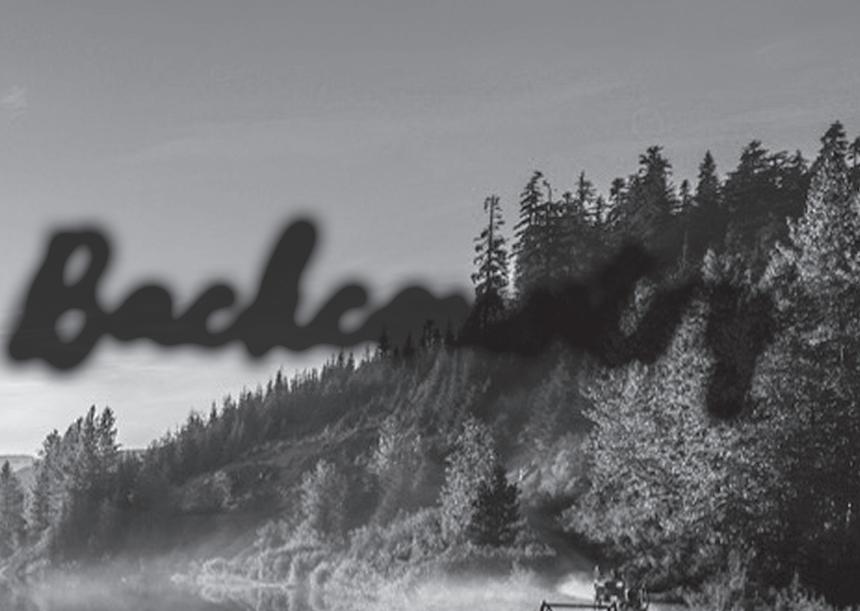





THE RMOW’S RESORT OPERATIONS DEPARTMENT IS KEEPING BUSY AS SPRING COMES TO A CLOSE
BY SCOTT TIBBALLSWHISTLER COUNCILLORS heard a little about everything to do with summer operations last week, with a lengthy update and question-and-answer period at the most recent council meeting on May 28 from the Resort Municipality of Whistler’s (RMOW) manager of resort operations, Derek Jazic.
Jazic’s department is responsible for maintenance, parks, gardens, bins in public spaces, trails, and more—so he and his staff are all keeping busy as they transition into summer operations.
On the garbage front, Jazic reported Whistler will see some new waste receptacles around the village and parks that can handle an item that has turned into a problem— pizza boxes.
“We have had, over the last few years, issues with pizza boxes overnight on the stroll as bear attractants,” he said, noting receptacles in town can’t currently take them due to their size.
“We’re experimenting with a couple of new receptacles which are big enough to receive pizza boxes, and we’re placing those in strategic locations where we see the accumulation of pizza boxes. We also have a
few in the parks that are solar powered with a compaction component that will crush the cardboard down and allow us to get higher volumes of cardboard, which becomes an issue in the parks as well.”
Jazic also mentioned his department is working on improvements to irrigation and watering systems, motivated by efficiency, and in part by vandalism against public property with watering systems damaged overnight.
In response to a query from Councillor
Ralph Forsyth wanting to know if there were more of them in the village, to which Jazic said he couldn’t be certain.
“I know we have experienced a higher level of what we believe is vole damage,” he said.
“Voles typically nest and build tunnels under the snow and in and around plant material and eat the layer of plant material to survive the winter. We’ve noticed a lot more of that damage… not sure if that’s mouse damage or if it’s strictly the voles.”
“We’ve seen an uptick in graffiti-style vandalism...”
- DEREK JAZIC
Arthur De Jong, Jazic said vandalism is “not getting worse,” but is a continuing issue.
“It’s not just irrigation, our garden beds will often get vandalized at the same time,” he said. “[It] usually happens late at night around the taxi-loop area, and we could probably surmise who those individuals are.”
Speaking of individuals, Jazic did note there is more graffiti in town of late.
“We’ve seen an uptick in graffiti-style vandalism which seems to be—judging by the artwork, if you will—a single person in the community.”
Mice also entered the chat, with Coun.
Coun. Jeff Murl asked how much the resort operations department’s workload is evolving with climate change, given the shifting seasons.
Jazic said there were a few things noticeable in that regard when it came to yardwork.
“Some of the things we see is the plant material we used to be able to rely on is problematic… birch trees used to be a really reliable landscape tree, we’ve had difficulty over the last few years,” he said.
Timing is also changing.
“We used to wrap our turf maintenance
crew at the end of September … [now] we’re cutting grass in mid-October on the regular,” Jazic said.
The solutions included shifting staffing levels to meet the seasons as they came, but Jazic reported that was a difficult thing to do as workers wanted more consistent employment.
On the environment, Jazic also touched on trails—specifically the Beverley Lake-area trails, where RMOW staff are working on, and re-routing, trails.
“We are building a new bridge to withstand snow movement and pressures over Beverley Creek and building a trail of about 75 metres that connects the Rainbow Lake hiking trail to the Ninja Lakes multi-use trail in the alpine network,” he reported.
“We’re doing this because it’s been recognized that the Beverley Lake area, which we had originally planned to develop hiking into, is prime grizzly bear habitat, so we’re decommissioning the trampledown start of a trail that remains there, and directing people away.”
The popular Rainbow Park remains closed for construction through June, with an anticipated re-opening day of July 1.
That same day will feature the return of the fan-favourite Whistler Village Canada Day Parade, followed later that evening by the kick-off of the popular Whistler Summer Concert Series, which runs every weekend throughout the summer.
Watch the full presentation on the RMOW website. n
PACK EM IN The Whistler Summer Concert Series returns for another jam-packed summer in the resort starting July 1. PHOTO BY OISIN MCHUGH / OISIN MCHUGH PHOTOGRAPHY
PROCEEDS FROM THIS YEAR’S EVENT GO TOWARDS MENTAL-HEALTH RESOURCES
BY LIZ MCDONALDHEALTHY HEARTS and minds are the goal for this year’s Hike for Health.
Organized by the Whistler Health Care Foundation (WHCF), the third-annual event aims to get hearts pumping for mental-health services in Whistler. Hikers meet at Blackcomb Base at 9:30 a.m. on June 16 and head up the Ascent Trail, a 6.2-km long leg-burner. There are three distances—Little Burn, Big Burn and Heartburn trails (dependent on snow melt)— and the event is accessible with an option to ride the gondola instead. Registration is now open and costs $40 for adults and $25 for children, and tickets include a day pass for sightseeing Whistler Blackcomb.
Jen Black, vice-chair of WHCF’s board of directors, said the choice for mentalhealth funding came from a clear need in the community and requests for funding from local service providers.
“We know that we have had some crises in this community, we’ve had losses, people struggling, and so let’s earmark this event this year to make a real difference in the mental-health support and initiatives that are available to our community,” Black said.
The funds will be distributed after the Whistler Community Services Society (WCSS), local experts and counsellors determine how best to allocate the money.
The goal for this year is $100,000, and the WHCF is almost to the finish line, with about $70,000 raised already.
People with the means to help are invited to donate more and receive a tax receipt, with options from $500 all the way up to $10,000. Deemed “trailblazers,” signs recognizing the contribution will be placed along the trail and donors will receive a gift.
“It’s a lovely way to do that little bit more to help us reach our goal,” Black said.
The event is sponsored by the Touchet family and hosted by Whistler Blackcomb.
Hikers can also expect on-course activation this year, with musical surprises along the trail.
WCSS executive director Jackie Dickinson is also slated to speak at the event.
The social-service provider offers frontline services in Whistler through an outreach team, while also connecting people with services and resources related to housing, finances and food security.
People aged 30 to 39 make up the biggest percentage of those accessing WCSS’ mental-health services, and the same group is also the highest percentage accessing the food bank. Dickinson pointed to structural causes.
“Lots of groups of people are struggling with low wages, a lack of affordability, not being able to potentially consider homeownership in their lifetime, not being able to think about extending families due to the high cost or limited access to daycare,” Dickinson said. “Those are just a few surfacelevel topics as to why this demographic of people are accessing more support, but they can’t be dismissed.”
Another factor that can influence mental health in Whistler is the paradise paradox, according to longtime local counsellor Greg McDonnell, with extreme sports providing both a healthy outlet and the potential for unhealthy escapism.
“It could exist on the continuum of tools that we use to numb ourselves. It could also exist on the continuum of health, so it’s how we engage with it,” he said.
One strategy McDonnell stressed was understanding individual needs and how people can prioritize their health.
“I think all individuals have to contemplate what they need to really take care of themselves—being socially connected, having purpose and meaning, living deliberately, managing drugs and alcohol, those are some key protective factors for our mental health,” he said.
One way to take care of individual needs is by spending time within community this Father’s Day during Hike for Health.
Read more at whistlerhealthcarefoundation. org/hike-for-health. n

IT WAS A BUSY WEEK for search-and-rescue crews in the corridor, as a pair of high-profile callouts kept rescuers on their toes.
As of Pique’s weekly deadline on Wednesday, June 5, one group of three experienced mountaineers was still missing in Garibaldi Provincial Park.
Squamish SAR manager B.J. Chute told Pique members were “hopeful to go in” on Wednesday afternoon pending weather and an avalanche assessment.
An avalanche assessment would be needed before people can search on the ground.
“We have our highly specialized team members on standby ready to respond. We are working with avalanche technicians who will be assessing the risks as we are facing winter conditions in the area,” Chute said.
Squamish RCMP, the Integrated Police Dog Services and RCMP Air Service are also involved.
A family member reported the trio missing after they were due to return from summiting Atwell Peak on May 31. There has been “no word” from the three people since.
Squamish SAR made significant attempts to gain access to Atwell Peak by air, foot and drone in the days prior, but were unsuccessful

due to dangerous avalanche conditions and wintry weather.
Chute believes the missing group is experienced and took all the right gear to complete the climb.
“This is not a simple day hike by any stretch,” he said, adding weather conditions were hampering the search.
“We need a long weather window to get the machines and some personnel into the


air and get eyes on to the scene,” he said on June 4. “Then we need to figure out what or even how we can stabilize the scene to put our crews into there should they need to go in.”
Fewer than five people each year are believed to climb the 2,655 metres to Atwell Peak. It’s known as one of the steeper and more inaccessible peaks in Garibaldi Provincial Park.
A local Squamish ski guide who summited Atwell Peak in February explained how it is
a “relatively uncommonly” climbed summit and people tend to attempt it during winter months when there is snow on the ground.
The RCMP is not releasing the names of the three individuals.
A heavy rainfall warning was in place for the region from June 2 to 4, with Environment Canada calling for 40 to 50 millimetres of heavy rain. At higher elevations, heavy snow continued to fall during the morning on June 4, when the freezing level in Garibaldi Provincial Park sat at 1,600 metres.
“We won’t send out rescue teams into areas of avalanche activity,” Chute said. “If we cannot see what’s referred to as overhead hazard, if there’s no way for us to see up to the areas in which we’re crossing and the areas in which we’re climbing, then we simply cannot send our rescue teams into that area.
“It’s just too reckless and too unsafe.”
Local mountain guides were hired but called back after the area was deemed unsafe.
Chute is reminding people it is still winter in the mountains and weather can slow down search efforts. People willing to go on these adventures need to have self-rescue plans.



TO COMPLY WITH NEW
REGULAR WATCHERS of Resort
Municipality of Whistler council meetings will have noticed the mayor’s spiel ahead of the public comment period has changed again, only months after the municipality adopted a new question and comment period structure that restricted input to agenda items.
New changes that first appeared at the May 14 regular meeting and continued at the May 28 meeting show the province’s new legislation around housing statutes (Bill 44) that prohibit public hearings on specific zoning bylaws are extending into other avenues of community engagement.
“We … want to note that recently, provincial legislation has changed and now prohibits public hearings on some landuse amendment bylaws,” said Mayor Jack Crompton ahead of the public comment period on May 28.
“As a result, speakers cannot speak about topics where a public hearing is prohibited, or where the municipality has opted not to hear a public hearing. We also want to note that this prohibition extends to council receiving correspondence on those items.”
Under Bill 44, municipalities are prohibited from holding public hearings on zoning amendments if they are compliant with its Official Community Plan (OCP), and the rezoning is for a residential development.
Asked whether the changes were at the direction of the province, Crompton said it was an abundance of caution on behalf of the RMOW, telling Pique the application of the new legislation in local government processes is an ongoing conversation at municipalities across British Columbia.
“We’re working to understand how to comply with provincial direction around
public hearings on projects that comply with the [OCP], so when someone comes and makes a public comment on something that can be the subject of such a process, we need to be very careful,” he said.
The legislation itself does not make mention of public comment periods, and is specific to formal public hearings as part of bylaw amendments, but Crompton said it was being understood to apply to all formal proceedings.
“The direction is to be careful that [municipalities are] not creating de-facto public hearings that become a workaround to provide a public hearing where one is not allowed,” he said.
UBC political science lecturer Stewart Prest said in an interview with Pique it is one of many varied responses by municipalities across the province in grappling with the legislation.
“We’re seeing municipalities respond in a range of ways like Whistler trying to go as far as they can to limit conversation around developments, to other municipalities such as West Vancouver more or less declaring almost a form of war against the bill and its intent by trying not to implement the necessary enabling bylaws, or finding ways to push back against the province and its intentions,” he said.
“We’re seeing a wide range of responses, and it’ll be some time before things shake out and we have a good sense of the full implications and the limits of this new legislation.”
Whether it is an overzealous application of the spirit of Bill 44, Prest said it is hard to say, as it could be interpreted as an attempt to avoid scrutiny of decisions, which Prest said could “ultimately come to the disadvantage of the council, because it will appear to voters paying attention that it’s an attempt to try
During this time of year and with foul weather, people are expected to be self-sufficient.
“911 cannot be your rescue plan,” Chute said. “A ground-based search, particularly over a long period or a long distance, can be quite a [time-consuming] event.”
Meanwhile, search-and-rescue members battled wintry conditions and avalanche terrain to rescue three stranded hikers on June 3.
Police received a call from the trio on Sunday, June 2, after they got stuck on their way to Wedgemount Lake and still had cellphone service.
The group was not able to make it to the Wedgemount Lake Hut and was told to hunker down for the night.
On Monday morning, Whistler Search



Idyllicwaterfrontcabin on spectacular21kmlong Anderson Lake, just 7minsfromthe dock in D’Arcy Fike’sBay is made up of asmall enclaveofwaterfront properties. Beat theheatthissummerwhile enjoying lake lifeatits best!Boataccess only,cabin sleeps 6bunkhouse2.PropertyisFreehold.
$497,000.00.

and Rescue (WSAR) president Brad Sills was alerted that the group was unable to travel out due to extremely slippery slopes and waistdeep fresh snow on the trail.
The hikers told police they had a tarp, sleeping bags and a heater.
Sills said four WSAR members hiked up to Wedgemount Lake to find the group on Monday through wet, windy and cold conditions.
The search-and-rescue members also had a trained avalanche dog with them.
They safely returned down from the mountain at about 6 p.m., and successfully guided the group out.
Everyone is “very wet and tired,” Sills said.
Even though it is June, it’s still winter in the mountains.
“You should be prepared for snowstorms and you should have full avalanche precautions with you,” Sills said. n
The Canadian Net-Zero Emissions Accountability Act enshrines into law our commitment to achieve net-zero emissions by 2050
Conserving 25% of land and marine areas by 2025, and 30% by 2030. We have over 842,821 km2 of coastal areas protected so far.
Launching Canada’s First National Adaptation Strategy, supporting flood mapping, funding climate resiliency infrastructure, and more


SOMEWHERE OUT there in beautiful Whistler, there’s a lucky sanitation worker who will get to sort through all the bags of dog poop that end up in the garbage.
What they will be trying to do is divert waste into compost, and to do that they need to separate non-compostable doggy bags from the Resort Municipality of Whistler (RMOW)provided compostable doggy bags that end up in the trash in public parks.
The amount collected is a mountain of a problem, according to the RMOW’s manager of resort operations, Derek Jazic.
“In our parks, dog waste in the garbage makes up the largest part of our garbage waste stream by weight and also volume,” he told Whistler’s mayor and council at the May 28 meeting as part of an update on his department’s summer operations.
“We’ve got a trial with the compost facility in the Callaghan to try and remove that from our waste stream and into the compost stream,” he said.
Jazic explained the trial is pretty hands-on.
“We have what we call a ‘PUP trial’ (Pick Up Protocol) at Alpha Lake Park where a contractor sorts the dog waste in the receptacles to remove non-compostable bags,” he said.
“In parks like Rainbow Park, Meadow Park, [and] Spruce Grove where we’re supplying the compostable bags, we’re encouraging them to go into the compost stream. We’ve been doing this for a little while and we’re waiting to see what the initial results are,” he said.
What’s collected then goes to the RMOW’s waste-transfer facility in the Callaghan Valley where it can be composted to a safe level.
The key barrier, said Jazic, is contamination from the non-compostable bags some people use.
“If we can keep that to a certain degree, we’re hopeful that we’ll remove that from the garbage waste steam,” he said.
The trial is something of an expansion of what the RMOW already has in place at Alpha Lake Park, with compostable bags provided, and dog owners encouraged to place collected poop in specific bins for the municipality’s composting stream.
The collection of garbage has come up a few times for the RMOW in recent meetings, with an update to council in April reporting a large amount of waste generated in the community could be diverted into other streams—like compost.
An RMOW communications official explained to Pique by email that by diverting dog waste into the composting stream,
it “would help toward our overall wastereduction goal.”
To Jazic’s point that dog waste made up the largest amount of waste in some parks by weight and volume, the official confirmed there’s a lot of shit to deal with.
“The parks waste audit data we have shows that dog waste in parks was 60 per cent of the overall waste weight at Rainbow Park and Alpha Lake Park, which are popular spots for dog owners,” the official said.
The number of dogs present in Whistler is not known, but municipal staff are aware
it is significantly higher than the number of mandatory dog licenses sold on an annual basis.
As of June 2024, there is no budget associated with the dog poop compost project, which is described as a small trial.
“If it’s successful—meaning park users do not add plastic waste bags to the bin which would contaminate it—then we will consider next steps,” the RMOW said.
“We are hopeful this will be in the case and we will be able to explore other key locations for similar receptacles.” n
to avoid responsibility or accountability in between elections.”
Alternatively, however, he said there is legitimacy in attempting to avoid the equivalent of hearings being held via loophole despite their prohibition—which was exactly the rationale given to Pique by Crompton.
Whether the legislation causes trouble for municipalities on the front of public engagement is yet to be seen.
“To try to limit the opportunity to oppose particular developments is one tool in the provincial government’s toolbox they are now using to try to move out of this extended period of housing crisis,” said Prest.
“I think there will be some blame to go around, because it is trying to winnow down the opportunities for local involvement in decision making, but it is trying to serve what the province is saying is the greater good in ensuring housing affordability across the board.”
For Whistler, there is not a complete gag on public input: At the May 28 meeting, Crompton directed the public to engage councillors in other ways outside of council meetings, and asked the public to engage fulsomely on an upcoming review of the RMOW’s OCP in 2025—which informs overarching housing policy. n



THE DEVELOPER CAN NOW CHARGE $495.28 PER SQUARE FOOT OF LIVING SPACE, COMPARED TO $425 PREVIOUSLY UNDER A NEW HOUSING AGREEMENT
BY SCOTT TIBBALLSTHE RESORT MUNICIPALITY of Whistler (RMOW) has (almost) agreed to enter into a new housing agreement with the developer of 5298 Alta Lake Road to allow for an increased maximum sales price per square foot for 21 employee townhouses.
In changes agreed to at the May 28 council meeting that received first and second reading, the developer of the units—which are part of a larger project on Nita Lake that received a development permit last year—can now charge $495.28 per square foot of space for the units when they are sold, instead of the initially proposed $425 per square foot.
Speaking to the item, the RMOW’s manager of planning, Melissa Laidlaw, explained staff supported the increase for a range of reasons, including the amount of time the project had taken to come to fruition, and the level of community amenities the developer was providing as part of the development, which was proposed back in 2018 under the RMOW’s “private sector employee housing initiative” to encourage private developers to offer employee housing.
“I note here that the $495.28 is less than unrestricted market value within the range of affordable options, and less than similar employee townhouses under the RMOW private sector employee housing initiative,” said Laidlaw.
Under the changes, the revised sales prices for the 12 two-bedroom units would go from $264,000-$294,000 to $308,000342,000 (not all are the same size), while the price of the nine three-bedroom units would go from $643,000 to $750,000.


In giving background to the file, Laidlaw said the development offered significant community amenities to Whistler, it had been “a bumpy road” to get the project to where it is, and the construction costs had gone up over the years since it was first proposed.
“Unlike other development proposals in Whistler that are providing employee housing, this proposal is providing significant other amenities in addition to the employee housing, and the amenity investment is estimated at $3.5 million not including the employee housing, or the land value of the parkland dedications,” she said.
Those amenities include a Valley Trail extension, and significant parkland complete with infrastructure, a public washroom and more. The project also includes 11 units for tourist accommodation, and 11 residential units.
The public hearing process for the project saw delays, which lengthened the timeline and, as explained by Laidlaw, required the owner to carry their mortgage for longer, while amenities added to the development as time went on included a public washroom that further increased project costs.
During questions, Laidlaw said while a building permit had not been issued yet, the project had received a site alteration permit, so trees were being removed and the site was being prepared. The building permit application was also with municipal staff.
Councillors Cathy Jewett and Jeff Murl picked up on the maximum rate rooms could be rented out in the employee housing— which as initially proposed in the previous



This rarely availablesuite is locatedinthe RainbowBuildingright in theheart of the Village. Spread over twolevels, this well-maintained, turn-key property is zonedfor nightlyrentals. Call or text 604-902-1700 to schedule ashowing
$1,999,000
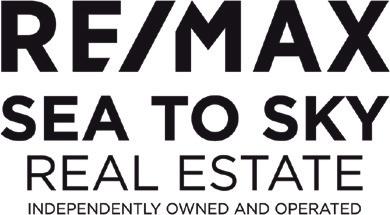
A DECISION BY Resort Municipality of Whistler (RMOW) councillors more than a year ago still has a Whistler resident disappointed with the community’s elected officials going against their own staff and bylaws.
The decision, made at the March 21 council meeting in 2023, was about a request for a variance allowing a Rainbow neighbourhood resident to keep a structure built up against the property line well over two years previously, against the wishes of their immediate neighbour—and municipal bylaw.
The RMOW’s own bylaws on auxiliary structures prohibit anything built within 2.5 metres of an external property line, so the neighbour called it in way back in late 2020, and a years-long back and forth between the owner of the structure who believed they were within code, the neighbour, and the RMOW began that culminated in a 4-3 vote to allow the structure to stay where it was.
The neighbour who originally called in the issue, Beverly Brown, told Pique that from the beginning, bylaw staff were adamant the structure—a 2.63-metre-tall shed that its owners wanted to use as a sauna—was not permitted given its location 0.35m from the
property line, but the process of moving it was drawn out for years before councillors decided to just let it stay there.
“I never understood why they didn’t just put their foot down and say ‘you gotta move it’ ... I never really got an answer.”
Brown explained the small yards in the neighbourhood and the size of the structure meant her backyard was negatively impacted
their own bylaws.
“They should have gone with the bylaw, they should have upheld that, and it shouldn’t have been based on how they felt,” she said.
Indeed, freedom of information documents requested by Brown, and passed along to Pique, show municipal staff were adamant from the beginning the structure was against code, and either required a
“I never understood why they didn’t just put their foot down and say ‘you gotta move it...’”
- BEVERLEY BROWN
by its construction, and the reason why she called it in in the first place.
“We are a perfect example of why those zoning bylaws are put into place,” she said. “Those are small backyards, and [structures] need to be 2.5m off the side of the parcel.”
But all of that is in the past now, because her neighbour got the variance they wanted— it’s the way council voted to allow it that has her disappointed and disillusioned with the way the community’s elected officials toe
Coming Soon!
Umo (“you-mo”), is coming to the Whistler and Pemberton Valley Transit Systems. Once here, Umo will introduce two new ways to pay your bus fare with your choice of the Umo mobility app or a reloadable Umo card.
Get ready for Umo’s arrival by visiting bc transit.com/umo or attend an educational info table to learn more.
Location Date Time
Whistler Public Library 4329 Main St. Whistler Tuesday, June 11, 2024 3:00 pm – 5:00 pm
Forecast Coffee 101-1200 Alpha Road Whistler Wednesday, June 12, 2024 11:00 am – 1:00 pm
Blackbird Bakery 7424 Frontier St Pember ton Thursday, June 13, 2024 11:00 am – 1:00 pm
variance to allow it, or needed to move. In the end, a variance allowed it, despite staff recommending against it.
The vote back in March 2023 came down to a 4-3 split after a 10-minute staff presentation recommending the variance be denied and a brief tit-for-tat questioning by councillors seeking clarification, before Mayor Jack Crompton asked if anyone would support the motion as presented (being a denial of the variance).
That question triggered a few seconds of silence before a motion was proposed by Councillor Jen Ford to approve the variance, and go against the staff recommendation and the municipality’s bylaws, because she didn’t see malice in its construction to begin with.
The foundation for her point of view was based on the assertion of the owner of the structure that they were under the impression the structure was a-OK—as seen in documents from the owner submitted as part of the council package on the day of the vote.
What followed Ford’s motion was a long discussion with all elected officials putting in their two cents on the nature of the issue, the cause of it being before them in the first place, any hardship involved in moving the structure, bylaws as they were written, and the perils of a municipality wading into a neighbourly dispute.
At the end of the discussion, Councillors Ford, Jessie Morden and Arther De Jong were OK with leaving the structure where it was, while Crompton along with Councillors Jeff Murl and Cathy Jewett came down on the side of bylaw.
Coun. Ralph Forsyth stood out as the swing vote. He said he believed he saw nothing in staff correspondence with the owner of the structure that said they could build it where they did, so there was no “smoking gun” that incriminated the

Visit bc transit.com/umo/engagement- events for up -to- date event details. Get your new edition in hotel rooms and select locations around Whistler.
municipality or exonerated the owner.
“The municipality followed its rules, someone complained, you go check it out, there’s back and forth, there’s nothing written down that says anything to the contrary of what we’ve heard here,” he said.
Despite that, he voted to approve the variance.
“At the same time I’m still like, I don’t care, it’s a sauna, whatever,” he said.
The result came as a surprise to Brown, who told Pique she felt let down despite following the municipality’s bylaws and processes since the beginning. She said the rationales given by each of the councillors that supported going against bylaw did not hold up, and felt her situation was given little consideration.
“They’re not backing up their own zoning bylaws,” she said. “If one owner can do it, why can’t all owners do it in Whistler? They don’t back up their own zoning bylaws. I felt very let down when the council voted that through.”
For their part: Ford said she didn’t believe there was malice in the construction of the structure on the property line, and moving it would be a hardship; Morden said there were “a lot of inconsistencies” in the documents before them, and that denying the variance would be penalizing a homeowner; De Jong said he didn’t believe the structure took away from the community as a whole, and as noted, Forsyth said bylaw hadn’t done anything wrong and approved it anyway.
housing agreement, and left the same in the new agreement, was $800 a room.
Jewett said this seemed low, given the owners of the properties would be “carrying quite a mortgage,” and questioned whether it could be raised.
Murl also picked up on the number, noting that with an increased sales price the benefit was given to the developer, but with no raised rental price no benefit was going to the future owners who would be permitted to rent out spare rooms under the housing agreement.
To avoid deferring the entire decision to a later council meeting (and adding more time to an already delayed project), the RMOW’s general manager of planning, Dale Mikkelsen said the sales price was of primary concern to the developer in “allowing the project to remain viable … so we get the
On the opposing side: Crompton said he saw no reason to consider a variance because the bylaws were clear; Murl said if a complaint came in that was found to be justified, it was reasonable for the municipality to expect a resolution along the lines of bylaw guidance; while Jewett acknowledged larger variances were permitted for larger, more expensive lots, but voted against it because of bylaw’s recommendation.
More than a year after the decision was made, Mayor Jack Crompton explained to Pique in an email that situations where council didn’t side with bylaw were “not common.”
“Council examines the facts of each case and comes to the table with an open mind. Ultimately, it is up to council to make the final decision on topics that are in front of them.
“In some cases, with all the facts before them, approving a variance to a bylaw does happen. This isn’t done lightly and therefore, with the appropriate rationale, should not undermine public trust.”
He added that anyone who felt they were impacted by a decision and wanted it reviewed could initiate a judicial review process.
During the vote in 2023, councillors had determined that the structure would still need a building permit after the variance was waved through, but in April 2024, the RMOW was overruled by the BC Building Code Appeal Board in requiring a building permit for the structure after it was disputed, and the municipality officially closed the file. n
delivery of these 21 units.
“We felt … given the amount of amenity they’ve provided, and the time it’s taken to get to this point, it was a reasonable ask, and it was well articulated.”
He added changes to the rental rate had not been asked for, hence the oversight, and the developer would be looking for certainty around the sale price.
Eventually, council decided to give first and second readings to the housing agreement bylaw, and directed staff to review room rental rates to inform potential amendments for a third reading at a future meeting.
The project, on Nita Lake, has long been with the RMOW, with back and forth on the overall plans and community amenities, and significant public pushback. Whistler’s mayor and council approved development permits at the end of last year. n


Are you a charity, non-profit organization or Indigenous-serving organization?
Does your work advance poverty reduction and social inclusion in your community?
You may be eligible to apply for the Community Prosperity Fund.
Applications close June 24, 2024.

Property taxnotices have been mailedout andare dueby Tuesday, July 2, 2024. Your UtilitiesNotices areincludedand sharethe same duedate.
Check thebackofyournoticefor eightconvenientpayment options,details about theHomeOwner Grant, andother essential information.
ClaimYourHomeOwner Grant
To avoidpenalty,claim your homeowner grantbyTuesday,July 2,2024 at gov.bc.ca/homeownergrantorphone 1-888-355-2700.
Property TaxPenalties
A10% penaltywillbeappliedtoany outstanding amountsafter thedue date,including unclaimed Home OwnerGrants.
Haven'treceivedyournotice?
ContactMunicipalHallbyemail accounting@pemberton.ca.or phoneusat604-894-6135 forassistance.
Learnmoreatwww.pemberton.ca/property-taxes

THE VILLAGE OF PEMBERTON (VOP) is looking ahead to September’s Union of BC Municipalities Convention, with a full slate of topics to discuss with provincial officials.
At the regular council meeting on May 28, Mayor Mike Richman said he would like to meet with at least three ministers to discuss pressing problems facing the village.
Chief among them is the ongoing risk from flooding, which reared its head again in January after heavy rainfall led to properties in Pemberton being put on evacuation alerts and orders.
Richman said he would prefer to meet Minister of Transportation Rob Fleming outside of UBCM to discuss the matter—but it’s not the only topic up for discussion.
Councillor Laura Ramsden asked if council could also request a meeting to discuss Pemberton’s roaming horses. Pemberton’s mayor and council has grappled with the issue for months, and voted in December to send letters, copying the Lil’wat Nation, to MLA Jordan Sturdy, the BC SPCA, and the Ministry of Transportation and Infrastructure requesting additional support in the matter.
Sturdy raised the issue in a graphic speech in the BC Legislature on March 13.
“Imagine for a moment that you are driving the Sea to Sky highway. It’s blowing and it’s cold, mixed rain and snow. You round a corner and without warning in front of you are a herd of 60 horses, stretched right across the highway,” he said. “Even as you hit the brakes, you smash into them. Horses come down. Down falls a younger horse, crunches onto your hood before sliding off to the side before it comes through your windshield. Your vehicle tumbles off the road and comes to a rest into the ditch, which fortunately is not full of water.”
Diking standards are also up for discussion
sufficient protection to communities.
“The 100-year event standard would provide a sufficient level of protection against flooding and associated risks and allow for the development of more diking infrastructure, while reducing the financial strain on local governments and enabling diking authorities to allocate resources more efficiently, prioritize critical infrastructure projects, and enhance community resilience against natural disasters,” reads the report.
Councillors are now seeking provincial support for designing, constructing, and
“There has been quite a big increase in grizzly bears.”
- CALVIN ROCHON
at this year’s UBCM.
On May 28, council approved a resolution seeking a relaxation of the 200-year event diking standard for submission to the UBCM. Council previously asked staff to work with the Pemberton Valley Diking District to draft the resolution addressing the hardship faced by communities required to meet current standards in building dikes. Staff noted in a report to council the standards lead to significant financial and logistical burdens. They said a 100-year standard would offer
maintaining dikes to the 100-year standard.
Council resolved for UBCM to call upon the provincial government to amend existing regulations pertaining to diking requirements, relaxing the current 200-year event standard to a more practical and financially sustainable 100-year event standard. They would also accept a lesser return period that can be shown to “provide valuable protection through engineering, geomorphological and geotechnical professional review and recommendations.”
They will also urge the provincial government to engage in meaningful consultation with municipalities, diking authorities, and other interested parties.
Further, Pemberton’s mayor and council will also push for the province to fund the Wildlife Safety Response Officer (WSRO) program at this year’s UBCM. The WSRO program fills gaps in the community in reducing conflicts between bears and humans.
Both the VOP and the Squamish-Lillooet Regional District heard presentations about the WRSO program last year, and how conservation officers in the area are overworked.
Calvin Rochon, who is a WSRO in the Sea to Sky, said the program was designed to mitigate conflict through education and public outreach, and notably, contact residents who make reports that don’t trigger a COS response. Rochon is employed by the COS, but the position is funded municipally.
With a resolution passed May 28, Pemberton’s mayor and council will call on the provincial government to pay for the role instead.
“There has been quite a big increase in grizzly bears,” Rochon said in a presentation to Pemberton’s council in March. “With the increase in population, it is going to keep increasing. There needs to be some sort of coexistence. The awareness needs to be there. People are looking for some sort of solution to it.
“I’m not saying that [the WSRO] is guaranteed going to be the one, but it will bring more education and outreach.”
This year’s UBCM convention will take place Sept. 16 to 20 in Vancouver. n
COUNCIL WAS SPLIT ON THE DECISION, WITH TENSION ABOUT GROWTH, THE OFFICIAL COMMUNITY PLAN AND THE CLEAR NEED FOR HOUSING
BY LIZ MCDONALDTHE VILLAGE of Pemberton’s mayor and council officially adopted an Official Community Plan amendment for the Nkwúkwma Sub Area Plan and a zoning amendment for the development last week, despite disagreement over the project.
While the motion to adopt the plan and rezoning passed, councillors were split on the decision, with Councillors Katrina Nightingale and Jennie Helmer voting against, and Couns. Laura Ramsden, Ted Craddock and Mayor Mike Richman voting in favour. The crux of disunity between council was about process, the need for housing, and what Pemberton would lose if they did or didn’t move forward with the plan. The housing development, Nkwúkwma, is a 450-unit housing proposal by Skénkenam Development Limited Partnership, a partnership between the Lil’wat Nation’s Lil’wat Capital Assets and the Pemberton Benchlands Development Corporation.
Before the vote, council reiterated the key points discussed during a public hearing and subsequent special council meeting May 14. Council chose to defer a vote during the special council meeting to consider what it heard at the public hearing, and opinions didn’t change in the span of two weeks. The biggest concerns were about traffic congestion and emergency response, the impact of growth on infrastructure, and the Official Community Plan, which is paused, and how that influenced the sub-area plan.
Ramsden touched on the traffic issue, and recognized it will be part and parcel of becoming a growing municipality. She also acknowledged the growth would be over a 20-year period, not overnight.
“It’s a negative that’s worth the positive,” Ramsden said.
Richman noted traffic studies show Portage Road can handle more vehicles, but that doesn’t mean residents are happy about increased traffic.
Helmer reiterated her concerns over the hillside development containing many future residents driving cars up and down, which is not in line with reducing carbon emissions. Nightingale re-stated emergency evacuation concerns with wildfire risks in the here and now.
Planner Cameron Chalmers noted the bylaw in question covers “safe and resilient” access prior to the first stage of development, which would “likely” include an emergency access. Another option would be twinning the road, and by the time of full build-out, the development would have to reconsider
traffic and look at alternative access routes.
“Staff believe the bylaw you’re entertaining does contain policy that directly addresses the need to provide safe and resilient access even though we may not have every detail yet at this stage. We’re comfortable with the options that are there,” he said.
In regard to infrastructure concerns, Richman noted council is working on asset management via a new water treatment plant. Exploring options for new water sources, RCMP, health-care and education are outside the scope of council’s powers, but the VOP actively engages in discussions with the school district and province to advocate for the village’s needs, he added.
Ramsden suggested increasing population could result in a bigger tax base for funding infrastructure and services, which Helmer strongly disagreed with, highlighting the current strain on services from existing growth and the need for increasing Pemberton’s taxes to deal with said growth.
Nightingale argued while much of the paused OCP principles have been incorporated into the sub area plan, it wasn’t respectful of the process to move forward ahead of the OCP.
“For me, it’s the respectful thing to complete that OCP through the integrity of a process before we make any substantial decisions,” she said.
Ramsden stressed that while the OCP process was important, the need for housing people is paramount.
Craddock noted while the OCP is on hold and some community members have taken issue with the development, many council members ran on housing platforms in the last election, and no other development projects have stopped because the OCP is on hold.
The mayor reiterated the Benchlands is zoned for single-family residential, and the developer can proceed without council’s approval of the sub-area plan and rezoning.
“It’s not a threat, it’s a reality that without the rezoning they can go ahead and build single-family homes and on top of that, the current reality with the [new provincial housing] legislation is not only could they go ahead with single-family homes, but they could build duplexes, triplexes and quadplexes wherever appropriate. So that density can happen in a big way anyways,” Richman said.
“Through this amendment, we are securing a huge investment in our infrastructure from the proponents. We are getting a $1.8-million investment in recreation … through the amendment, we secure improvements to Eagle Drive, we secure conversations around the emergency access and egress through the amendment.” n

TheCouncil of theVillage of Pembertonintends to amendBusinessLicence Bylaw No.855,2019 at theregular council meetingtobeheldat5:30pmonTuesday, June 18, 2024.The purposeofthe proposed amendmentisthe following:
1.To remove thelimitsonthe numberofbusinesslicencesavailablefor shortterm vacation rental andmobilevendorbusinessesfromthe bylaw. Thelimit on short-term vacationrentalbusinesseshas been addedtoZoningBylaw No 832, 2018
2.To amendthe definitionsofshort-termvacationrentaland bedand breakfast businesses.
3.To adda newbusinesslicence type,bed andbreakfast inn.
Thebylaw will alignthe definition of short-term vacation rental with thedefinition setout in theShort-TermRentalAccommodations Act. Copies of theproposed bylawand background informationmay be viewed on theVillage websiteat Pemberton.ca andinspected at theVillage of PembertonOfficeat7400Prospect Street during office hours from Friday,June 7thtoTuesday,June18th. All persons whoconsider that they areaffectedbythe proposed bylawwillbe provided reasonableopportunity to make representation to Councilinwriting Writtensubmissions must be addressedtoMayor andCouncil andmustbe received by noon on Friday,June14th: Email: corporate@pemberton.ca
Mail or delivery: Corporate& Legislative Services,POBox 100,7400Prospect Street,Pemberton, BC V0N2L1
Writtensubmissions received before noon on Wednesday, June 12th will be included in theagendapackageand will be availableonthe Villagewebsite at pemberton.ca.
GwendolynKennedy Manager, Corporateand LegislativeServices

Apermissivetax exemption(PTE) is away forthe Village of Pembertontosupport voluntary, non-profit organizations that providevaluableprogramsand services to residents. TheVillage mayexempta non-profit organization from taxation of property used formunicipal, recreational,religious,cultural, or charitable purposes.Applicants must meet thecriteriaset out in section 224 of the Community Charter andinVillage PolicyFIN-002, Permissive TaxExemptions. TheVillage is inviting qualified organizations to applyfor aPTE for2025. Applications must be received by theVillage by 4:00pmonJune 30, 2024.
More information, includingapplicationforms,isavailableatthe Village of PembertonMunicipal Hall at 7400 Prospect Street,on theVillage websiteatwww.pemberton.ca,and by emailat admin@pemberton.ca


Meet with me via video conference, telephone, and in person

604 932 3211
332-4370 lorimer road s shaw@raceandco com
The public is invitedtoreviewand comment on BC Timber SalesChinook –Squamish field team (BCTSSquamish) Forest OperationsMap,showing proposed road construc tion andcut block developmentunderForestStewardship Plan #941 within Forest DevelopmentUnits in theSea to Sk yNatural Resource District.The mapwillbevalid forthe operatingperiodfrom July 8, 2024 –July8,2027. During theoperating period,the Timber SalesManager mayinviteapplications forTimberSale Licensesfor thehar vestingofcut blocks shownonthe map andapply forroadpermits to construc troads shownonmap The mapisavailable forpublicreviewand commentonline, at: fom.nrs.gov.bc.ca/public/projects andbysearching 1504asthe FOMNumberunder the“Find” function.
Themap is also availablefor in-personreviewand comment by appointmentatthe BC Timber SalesSquamishO ffice, Monday toFridayfrom8:00a.m.to4:30p.m., at BC Timber SalesChinook/SquamishO ffice,101- 42000 LoggersLane, Squamish,B.C., V8B0H3
Commentswillbeacceptedbetween June 6– July 7, 2024. Commentsmay be submitteddirec tlythrough fom.nrs.gov.bc.ca/public/projects,emailed to BCTS.Squamish@gov.bc.ca,delivered to theaddress aboveduringbusinesshours,ormailedtothe addressabove to theattention of BC TS Squamish. If youhavequestions or comments, or require assistance, pleasecontact: BCTS.Squamish@gov.bc.ca.
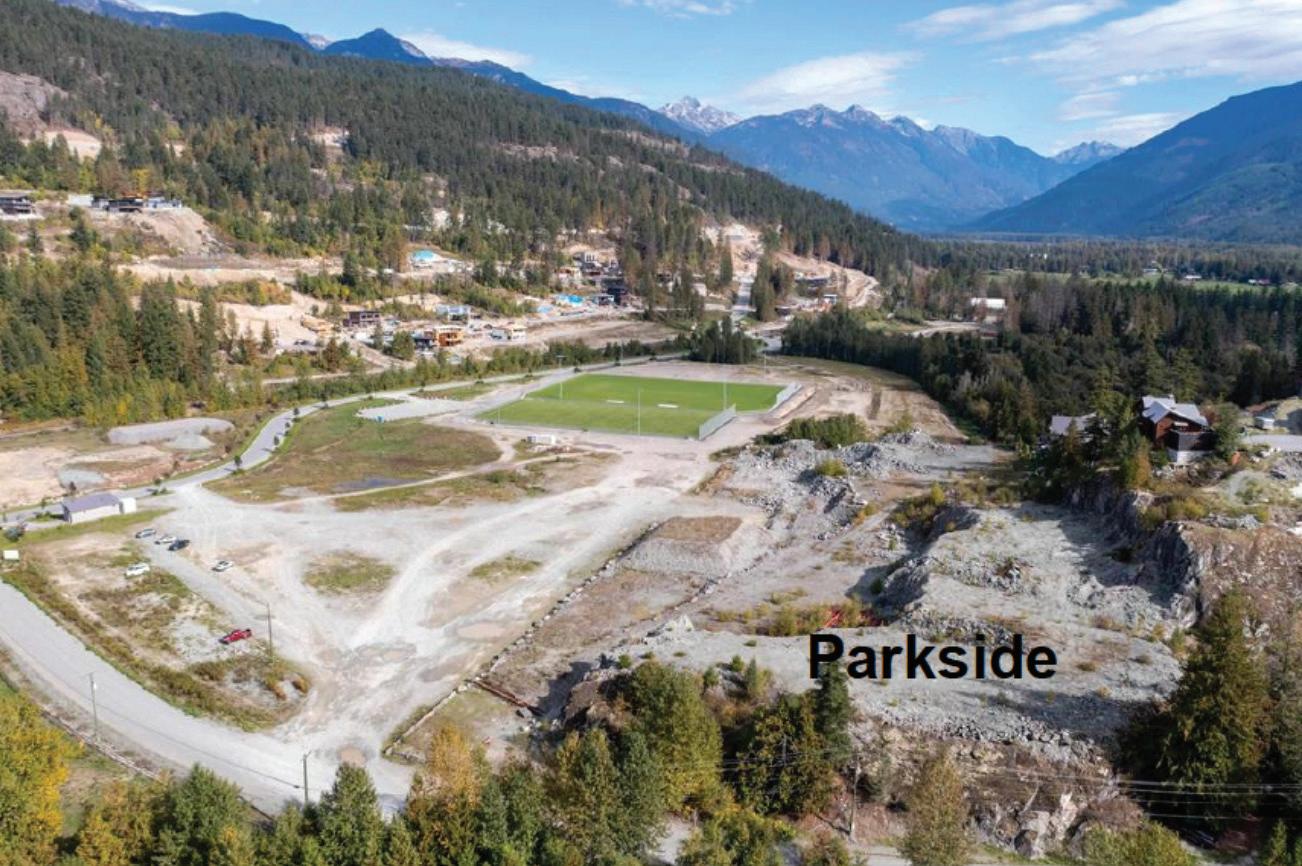
THE PROPOSED PARKSIDE housing development in Pemberton is one step closer to creating more homes in the village after a public hearing and subsequent bylaw readings on May 28.
Parkside is located at 7362 Pemberton Farm Road East and envisions a 33-lot subdivision with single-family homes, duplexes, triplexes and co-housing and a commercial sector centred around Den Duyf Park—hence the name, Parkside.
The public hearing was to consider amending Pemberton’s Official Community Plan for the project, as well as a related zoning bylaw. Changes to the plan since the last time the bylaw came to council include a path from Pemberton Farm Road East into the subdivision and a more detailed landscaping and green-space plan.
Councillor Katrina Nightingale highlighted her appreciation for changes made, noting the density and connection to Den Duyf Park would accommodate greenspace needs.
She proposed limiting the number of single-family homes in the development to 15 per cent. The plan presented includes six single-family lots out of 33, which represents just over 18 per cent.
“What I’m hearing is people are very confident that these will be developed as duplexes and triplexes, and so with that in mind I would just like to ensure that this aspirational plan will… provide that missing middle to our community,” she said.
Coun. Ted Craddock countered that the last meeting council directed staff to reduce the amount of building space on lots from 50 to 40 per cent to ensure singlefamily lots wouldn’t take precedence from a developer’s standpoint.
Coun. Laura Ramsden echoed
Nightingale and said the decision could be included now through the land title or a covenant and adjusted later should the housing market change.
Mayor Mike Richman wasn’t sold on the idea.
“Personally, I’m in support of the intention … we are trying to hit that missing middle and it is a good spot for that density. I wonder about 15 per cent as a number; I don’t know if all the lots are appropriate for triplexes or quads or duplexes,” he said, noting if they did implement the requirement, some lots could become “albatrosses” that aren’t usable.
Nightingale reiterated the market and the community wants a mix of housing outside of the traditional 20th-century family home model, calling her proposal an insurance policy.
Development services manager for the Village of Pemberton, Scott McRae, noted if council does consider a restrictive covenant, it should also include a policy to revisit the impacts.
“We’d want pretty clear instructions from council as a body how often they would think to revisit this to monitor the impact it’s having,” he said.
Craddock highlighted if the municipality’s requirements were too inflexible, developers could opt out of building in Pemberton for a lack of profit or purchasers.
“It’s not a road block, but I think it would be a tough go for a developer to work under those circumstances,” he said.
Coun. Jennie Helmer reiterated Nightingale and Ramsden’s concerns to ensure the proposed development represents current housing needs for Pemberton’s residents, and suggested council consider what a restriction process or review process might look like.
Council adopted the OCP amendment, and added to the zoning amendment a requirement that staff report back on tools council can implement to ensure a mixed-use development, which they approved. n

I DON’T THINK I’m alone in saying the past decade seemed to fly by. In 2014, Whistler had settled into its post-Olympic groove. The World Ski and Snowboard Festival (known colloquially as “Telus”) was still kicking ass with impressive live music, world-class freestyle ski
 BY VINCE SHULEY
BY VINCE SHULEY
and snowboard competition and a full 10 days of arts events. Vail Resorts’ purchase of Whistler Blackcomb was still two years away, and while the cost of living in the Sea to Sky corridor was rapidly climbing, it was still a far cry from today’s post-pandemic overinflation. And you could still ski right into Whistler Bowl through its main entrance, right up until closing day.
At risk of being one of those crusty locals who thinks everything used to be better in Whistler, I’ll refrain from saying everything used to be better. Let’s just say things were a tad simpler.
It was two years earlier, some time around the summer of 2012, when I signed on for what would be the biggest mountain expedition I’d ever attempt: crossing the Fedchenko Glacier
in Tajikistan and hopefully returning home with some photos of skiing in what is one of the most remote regions in the world. Ten years ago in May 2014, me and four other adventurous souls went for it.
The trip took months of planning and preparation, including writing more than a few grant applications to help fund it. Our party of five ski-town locals could not afford
starting point. The first eight days of the expedition were brutal. Warmer-than-usual temperatures that year meant much of our approach to the glacier was without snow. So instead of dragging our 90-kilogram duffels, we had to separate the contents into smaller packs and hoof it up rugged alpine terrain.
The last five days of the trip—the exit from the glacier to our pre-arranged pickup—
I gained a lot from that trip. It was where I learned how to live in a real base camp, which I could pack up and move at a moment’s notice.
a six-week expedition on the other side of the world, so we needed support. With funding grants from MEC, Polartec and the Alpine Club of Canada, the biggest costs of flights and ground-transport logistics were (for the most part) taken care of. While we were lucky enough to get some clothing and equipment from other sponsors, we still needed to invest in the specific gear you need for surviving for weeks on a high-altitude glacier—like a -30 C sleeping bag and a 130-litre duffel bag (strapped to a lightweight toboggan) to haul food and supplies for four weeks.
In late April of 2014 we flew into the former communist capital of Dushanbe, gathering the extra food and fuel we needed for our stoves and driving two days along the border of Afghanistan to reach our
were similarly difficult, though at this point we had eaten or discarded any excess food and fuel. But our bodies were in a much less capable state, with everyone having their bouts of acute mountain sickness and losing a substantial amount of weight.
The best parts of the trip were those 17 days between the arduous approach and exit. Apart from the day we had to dig one of our crew out of an avalanche (he was fine, but we were all rattled). That sucked. Even with the rotten snowpack of Central Asia kiboshing any real skiing on the trip, traversing the largest non-polar glacier in the world (at the time) was a defining experience.
I gained a lot from that trip. It was where I learned how to live in a real base camp, which I could pack up and move at a moment’s
notice. It’s where I learned the physical limits of my body are a mental challenge, provided it has sufficient hydration and nutrition. It’s where I learned to travel at high altitude with brutally cold freezing temperatures at night, and managing dangerously strong solar radiation and heat during the day. When you’re that far away from civilization with efficient emergency rescue not necessarily available, all the little things with your equipment, your camp, your health—it all requires meticulous management in order for you and your party to succeed. Traversing the Fedchenko Glacier is the hardest thing I’ve ever done and will likely be the most ambitious backcountry trip I ever do.
A decade on, I’m no longer at the point in my life where I need or want to undertake a ski mountaineering trip of this scale. I’m OK with roughing it a few nights in the backcountry for good skiing. I’m OK doing the regular vacations where you have a comfortable bed, good food and a good drink at the end of the day. But if you’re inspired to explore the mountains of this world where few people have set foot, it’s certainly a challenge worth pursuing. Even if you’re a one-and-done guy like me.
Vince Shuley would like to give a heartfelt shoutout to Squamish ski guide Holly Walker, one of his teammates on the Fedchenko. Her planning made the trip happen and her moral support during the hardest days was inspirational. For questions, comments or suggestions for The Outsider, email vince.shuley@gmail.com or Instagram @whis_vince. n

On a warm day in August, Anthony Stewart hiked through a forest on Washington’s Olympic Peninsula, making his way through a tangle of ferns and grasses. Wispy, lichen-coated branches hung overhead, providing shade as he set down his backpack and shovel, and he and his team prepared to dig.
This was one of Stewart’s favourite study sites, he said. It’s relatively dry on the surface, but just underneath it, a layer of reddish soil, full of organic matter, gives way to grey-blue, claylike soil. These layers, formed over time as water flooded the area, are signs of a wetland. But like many forested wetlands in the Pacific Northwest, this area doesn’t appear on any state maps.
The previously best available estimates of the wetland area in the Hoh River watershed, from the National Wetland Inventor (WI) (orange) versus the probability that a certain area is a wetland based on estimates from the current study (yellow to blue).
Size of wetland area, according to estimates from the current study.
Soil organic carbon estimates, comparing the current study’s estimates (purple to yellow) to the best available estimates of wetland soil organic carbon amounts (brown-teal).
The soil organic carbon distribution throughout the study area modelled by the current study.
Modelled soil organic carbon levels from a previous global dataset, SoilGrids 2.0.
Amount of soil organic carbon estimated by another global dataset, the United Nations Forest and Agriculture Organization (UN FAO) Global Soil Organic Carbon (GSOC) Map (purple to yellow).

In a recent study published in Nature Communications, Stewart and his team reported the surprising abundance of unmapped, carbon-rich wetlands in the Pacific Northwest’s forests. The scientists studied the Hoh River watershed, which snakes westward across the Olympic Peninsula, documenting wetlands that were invisible to satellite imaging, the standard technique for measuring wetlands, owing to the thick forest canopy. Including them in estimates of the watershed’s carbon-storage capacity increased them by fivefold.
Conserving forested wetlands not only protects valuable habitat; it could help stabilize the climate. But first, the wetlands must be put on the map—and that is no easy task.
Wetland ecosystems are stunningly effective at soaking up carbon from the atmosphere. Despite covering only roughly six to eight per cent of the world’s land surface, they contain roughly 20 to 30 per cent of the carbon stored in the soil. And because the plant matter in the waterlogged soil decays slowly, their carbon tends to stay put.
Wetlands provide other benefits, too: More than 10 per cent of all species, including 50 per cent of all endangered ones, rely on wetlands. The gnarled roots of wetland trees and plants purify water, and the wetland soils absorb it, providing flood protection to nearby areas.
Since the 1920s, the Department of Agriculture has surveyed the types and quality of soil throughout the U.S. But until recently, these soil maps focused primarily on agricultural land, leaving out most forests and leaving huge gaps in knowledge about the Pacific Northwest and Alaska. On top of that, “wetlands were not at all a focus in forested landscapes,” said David D’Amore, a soil scientist with the USDA Forest Service and a co-author of the study.
To identify these hidden forested wetlands and estimate their carbon content, the researchers used the Wetland Intrinsic Potential (WIP) tool, a wetland mapping tool that uses LiDAR, or Light Detection And Ranging, an aerial remote sensing technique that can resolve details underneath the tree canopy. The researchers then randomly selected 36 sampling sites across the entire Hoh River watershed, many of which were far from any sort of trail.
Armed with shovels, hoses, and pumps, the researchers drove along bumpy backcountry roads and bushwhacked their way through thick woods. Once they arrived at their sampling locations, they used shovels to dig three-foot-deep holes in the ground. “It’s really intensive to get a carbon measurement,” Stewart said. “It’s not an easy path.”
The team scooped the soil into gallonsized plastic bags and carried it back to the University of Washington. In the laboratory, Stewart ground the samples to a fine powder and heated them to 1,000 degrees Celsius (about 1,800 degrees Fahrenheit). At that temperature, the carbon-containing substances in the soil were completely decomposed and transformed into carbon dioxide, allowing the scientists to measure its carbon content. Finally, the researchers combined the soil carbon data with remote sensing topography information to create a model of the amount of soil carbon that is stored across the watershed. “We just rediscovered these really carbonrich forested wetland areas that weren’t being mapped by the currently available land datasets,” Stewart said.
In the 2016 National Wetland Condition Assessment, a federal survey of U.S. wetlands, Amanda Nahlik, an ecologist and biogeochemist in the Office of Research and Development at the Environmental Protection Agency, concluded wetlands in the West held about six per cent of the total carbon stored by wetlands in the Lower 48. “We recognized we were probably underestimating the amount of carbon stored in the West,” she said. Stewart’s study confirmed this hunch. “There is this landscape that’s uncharacterized that we need to start to target,” Stewart said.
‘We are going to need to do better’
In general, wetlands aren’t faring well. More than 50 per cent of the wetlands in the Lower 48 have disappeared since European settlement, and over the past decade, the rate of wetland loss has doubled, according to the most recent Fish and Wildlife Service’s National Wetlands Inventory. Roughly half of the wetlands in the Mountain West are in poor condition. Though there are thought to be fewer wetlands in the arid West than on the East Coast, “that does not mean that those wetlands are less important,” said Megan Lang, the inventory’s chief scientist. “In fact, it might mean that those wetlands are more important, because there are fewer of them.”
The two main drivers of wetland loss in the West, said Lang, are drought and cattle grazing. Climate change, which is expected to increase aridity in the West, could dry up half the region’s remaining wetlands by 2050. And when wetlands are destroyed, their carbon is often released into the atmosphere, further worsening global warming.
Last year’s U.S. Supreme Court decision in Sackett v. Environmental Protection Agency changed the federal definition of a wetland, disqualifying thousands of miles of ephemeral streams and millions of acres of wetlands in the West—including those along the Hoh River—from protection under the Clean Water Act. Some federal and state initiatives are attempting to compensate: In late April, President Joe Biden announced a goal to restore 8 million acres of wetlands over the next six years. And in early May, Colorado became the first state to pass legislation protecting the wetlands excluded by last year’s Supreme Court decision.
Lang emphasized that it’s crucial to map, measure and conserve the wetlands we still have.
“If we’re going to maintain resilience to climate change, if we are going to have clean water for the future, if we’re going to keep feeding our families, if we are going to be safe from flooding, we are going to need to do better in terms of wetland conservation,” Lang said.
Natalia Mesa is an editorial intern for High Country News based in Seattle, Washington, covering the Northwest. Email her at natalia.mesa@hcn.org.
This story originally appeared in High Country News on May 24. Read the original version here: hcn.org/articles/the-wests-wetlands-are-struggling-some-have-been-overlooked-altogether. n


BRADEN AITKEN AND MHAIRI SMART LOCKED UP SILVER AT PROVINCIALS; PEMBERTON TAKES OVERALL CROWN
BY DAVID SONGTHE YOUNG GUNS have come to ride, and by all indications they’re here to stay.
Whistler Secondary School’s (WSS) Grade 8 boys and Grade 8/9 girls each clinched a banner in the North Shore High School Mountain Bike Series with consistent performances across Mt. Fromme, Squamish, Mt. Seymour and Whistler. Leo Pullen was especially dominant, winning the season title for fastest boy in his age group across all six races.
“I am pretty stoked to win the banner with my teammates,” said Pullen. “I think I’ve improved [too]. I have experience with competition during the ski season because I do freeride and think more critically about where my line is to go the fastest, most consistent speed down the track.”
Added WSS bike coach Lesley Clements: “Leo is energetic, enthusiastic and happy to be on his bike. He hasn’t done any [consistent] cross-country racing before this year, but he has a lot of natural talent and some really, really good results.”
Not to be outdone, three upperclassmen shined during BC Provincials at May’s end in a field of more than 450 riders.
Braden Aitken was crowned Senior King of the Mountain by way of silver medals in both the cross-country and enduro events. Mhairi Smart took the runner-up spot in enduro and Theo Rothdram placed fourth by four-tenths of a second.
WSS students remained cheerful and loose all weekend despite the muddy and slippery courses confronting them in Squamish.
“To be honest, I rode with my friends, tried to have as much fun as possible and it worked out well,” Smart remarked about her provincial performance. “It would not be the same if you were just thinking about the pressure all the time. I think you need to sometimes let it go.”
It’s not every year the eighth-graders win a banner, but Clements sees a lot of potential in her young athletes.
“I’m really proud of my team and it’s great to see a lot of interest and enthusiasm from the younger grades,” she said. “Hopefully, we can keep them going on the school team. We’ve got lots of stoked Grade 8s and 9s—I would say more than usual. It’s an energy I haven’t seen in a few years with [those cohorts].”
The growth has been obvious. In addition to standouts like Pullen and Max Murray (fifth at enduro provincials), there are kids
like Sawyer Munn Gotto who had little to no experience riding uphill before the school year. Gotto has done a proverbial about-face, becoming comfortable with elevation gain as his peers spur him on.
A pair of seniors have also stepped up in leadership.
Take Aitken, whom Clements calls a “superstar” for being an assistant coach at regularly-scheduled Monday training rides. Aitken helped mentor the team as they worked on their fitness and brushed up on their technical abilities.
“Braden is solid,” Clements said. “He never gets ruffled by ups or downs. He’s consistent in his effort. He’s mature. He’s a great role model and if he does have a bad race, it doesn’t bother him. I’m really sad that we’re losing him [to graduation] because he’s been with us since Grade 8.”
Then there’s Smart, a consistent and upbeat teenager who made it her job to recruit as many kids as possible to the bike team.
“It’s just so awesome that all these younger kids are getting out and joining the bike team, especially the younger girls— there haven’t been many in the past,” she said. “The courage it takes to come out and race when you’re the youngest girl is insane, and I’m so happy [that they’re doing it].
“I didn’t have a lot of girls to look up to when I was younger, especially in highschool mountain biking, so if I could [be a role model] for somebody else, that’d be awesome.”
Many WSS riders love enduro and the thrill of descent it brings, yet Clements is cut from the traditional cross-country cloth. She tries to get her pupils to embrace pedalling until they realize it can be fun to go upwards, too. Nine years into her stint as coach, her job remains rewarding.
“It’s so much work, it’s absolutely insane and it almost killed me by the end of this season,” Clements admitted. “But I get emails from parents saying their kids really enjoyed biking. You see them improve, and you see that they like school more because [our team] is part of it. That’s pretty amazing.”
Clements was also quick to shout out the dedicated adult volunteers who make the season a reality. Parents drive their offspring to races across the North Shore, and a record number of faculty members (six) joined Clements in coaching. It all added up to healthy skill development and a valuable opportunity for students to bond with their teachers outside of a classroom.
“[The teachers] have done everything for the mountain bike team,” said Smart. “Ms. Clements is so passionate about bikes. She brings that to our group and works so hard to get it running.”
Meanwhile, in what is fast becoming a dynasty, Pemberton Secondary took home its third straight overall provincial mountain biking title in Squamish May 23 and 24. Check back with Pique for the full story next week.
Full results from the 2024 BC Provincials are available at zone4.ca/results. n

THE WILDHORSE Traverse Ultra Trail Race is not an Ironman event, covering a “mere” 50 kilometres as opposed to the famous 226plus kilometre triathlon format. Even so, Marla Zucht had to be tough like iron to reach the finish line in silver medal position.
Ten days before the contest, Zucht slipped on an icy patch during a run through Emerald Forest. It was an inopportune time to break her wrist, but she didn’t want to give up. She got through a few more days of measured training and felt her eye-catching, multicoloured cast was not going to hold her back too much.
Thus Zucht headed for the Wildhorse on May 4: a point-to-point race beginning in Kelowna and terminating in the small, unincorporated community of Naramata. Before her lay a rugged route along the shores of Okanagan Lake featuring more than 1,900 metres of elevation gain, technical singletrack descents and a final stretch through the Kettle Valley Railway.
More than 268 athletes showed up, and 10 were unable to finish. Zucht herself did so in six hours, 28 minutes and 42 seconds: enough for second place in the women’s age 50-59 division.
“I’ve spent a bunch of time in the Okanagan, but this is a pretty remote area so I hadn’t been on these trails before,” said Zucht. “It was a unique adventure, a unique challenge and a unique opportunity to see some beautiful new terrain.”
Zucht knows Ironmans like the back of her hand, having completed her fifth World Championship in the discipline last October. The Wildhorse presented a different task: while she didn’t have to worry about swimming and biking, she did have to navigate winding
canyons and all kinds of uneven terrain. Only three aid stations were located along the course, one of which had to be deployed to the Okanagan Lake’s western shore via boat.
Thanks to her cast, Zucht couldn’t make use of trail-running poles. The injury did not present an undue hindrance beyond that— although she did exercise caution on each of the more arduous descents. Another fall on the same wrist might have been overwhelming.
“There was one section where we had to drop down a pretty steep canyon to access this aid station [on the lake shore], then turn around and come back up,” Zucht recalled. “At this point in the race, which probably lasted 20 minutes or 30 minutes, the racers were passing one another on a pretty narrow singletrack trail. I wanted to just make sure I wasn’t hitting another runner—as we were brushing shoulders, pretty much.”
Admittedly, racing on unknown ground instilled some degree of trepidation in Zucht. Visualization is a key part of how she prepares, and familiar venues like KailuaKona, Hawaii (the site of the Ironman Worlds) allow her to take mental stock of the obstacles ahead. The Whistlerite studied maps and video clips of Wildhorse as best she could, but that’s no substitute for bootson-the-ground experience.
Having said that, the element of surprise also created intrigue. Zucht nearly stopped in her tracks on multiple occasions when she rounded a bend and discovered a new view: be it a breathtaking canyon, gorgeous waterfall or picturesque vineyard.
“I really enjoyed it,” she said. “I thought it was a really well-organized event. It had only come onto my radar last year. The camaraderie of the other racers was just amazing, with everyone having the chance to chat to one another. All in all, it was a pretty great ultra trail running experience.”
Full results from the 2024 Wildhorse Traverse are available at startlinetiming.com/ en/races/2024/wildhorse/event/52K/page. n

Join theWhistlerCommunity Services SocietyBoard of Directorsand play an essentialroleinguiding, creating andbuildingthe future of this vitaland dynamic community social serviceorganizationwhose mission is to support andadvocatefor ahealthy community.
Successful candidateswill have astrong background in oneormoreof:
•Financial oversight
•Nonprofit finances
•Seniorlevel businessmanagement
As well as thecapacityand interest to grow into a leadership role.
NewBoard Directorsmustbeabletoattenda monthly boardmeeting(canoccasionally attend virtually), as well as amonthly financecommitteemeeting (mainly virtualattendance),aswellastimetosupport thework of theboard
To apply, please submit thefollowing to secretary@mywcss.org:
1. BoardDirectorapplicationformavailableat: mywcss.org/about-wcss/employment/ 2. your current resume andreferences(optional)
ApplicationDeadline: July 2, 2024
Theinitial term is to June 2026.Board meetings are held on thelastWednesday of each month, and FinanceCommitteemeetingsthe Monday prior.
Allapplicants will be contacted.
If youwould like assistance with theapplication process, interviewreadinessortipsfor resume and coverletterwriting,sendyourquestionvia emailto secretary@mywcss.organd we will make aWCSS BoardDirectoravailabletoyou as an advisor.
WCSS is dedicatedtodiversity,inclusion andantiracism.Our commitmentisreflected in our programming, theclients we engage with andthe team membersweemploy. We encouragea workplaceinwhich individual differencesare recognized,appreciatedand respected.
We welcomeapplications from allqualifiedcandidates!
THUMBS UP Marla Zucht proceeds through the 2024 Wildhorse Traverse, cast and all.
WELCOME TO THE WONDERFUL WORLD OF SLIME MOULDS, THANKS TO THE WHISTLER NATURALISTS
WHEN I WAS A KID I couldn’t stand tomatoes.
“Ugh, they’re slimy! Like guts!” I’d protest in my best little kid’s take on indignation and outrage to anyone within hearing distance, as my parents patiently encouraged me to try just a bit, especially a big, ripe tomato
 BY GLENDA BARTOSH
BY GLENDA BARTOSH
from my grandad’s garden in Edmonton. But I couldn’t stand the liquid, reddish, seedholding placental tissue (yes, that’s what it’s called) oozing all over my plate.
I have to admit I had kind of a love-hate relationship with slimy stuff, like a lot of folks do. Fascinated and repelled at the same time. Slime on my plate, ugh. But slime in movies and pop culture? Bring it on!
The nasty, wet, brownish-grey glob in Bacterium. The crazy, reddish-brown blob oozing out theatre doors in The Blob (circa 1958), which I always thought looked kind of yummy, like my mom’s homemade toffee before it cooled. “X... the Unknown” that “kills but cannot be killed!” A cinematic slime so huge and magnificent it flows over trucks and homes like a giant, slippery mudslide. Ghostbusters, The Slime People, oobleck— seems we can’t get enough slime.
But the official definitions of “slime” kind of sidestep its complex roots and contexts. By my handy Canadian Oxford,
AND SIZES
slime is either thick, slippery mud or any similar soft substance, especially when it’s considered noxious or unpleasant. It’s also a viscous mucous excretion exuded by fish, snails and the like.
The word’s etymology casts a broader net. “Slime” is from the Old English slīm, of Germanic origin, related to the Latin limus meaning “mud” and the Greek limnē for “marsh.” Slang, like slimeball, and getting slimed, are a whole other thing.
All this might explain my head-overheels fascination with slime moulds when I first stumbled on them, literally, in a bioart class I took at Vancouver’s Emily Carr
art class with another of Canada’s most dynamic artists, who also happens to live in Vancouver, David Khang. (Check out his anti-war Militant Monarch projects.) We art students just shrugged: “Oh well, they both start with ‘b.’”
It turned out to be one of the coolest classes ever, not least because it introduced me to slime moulds via the work of French scientist Dr. Audrey Dussutour, who, along with other researchers, determined that slime moulds are capable of learning and teaching, and navigating complex environments. That means making decisions—all without a brain or nervous system.
Slime moulds can be found in mulch, on lawns, or even climbing up buildings. There are more than 900 species, and scientists figure they’ve been around at least 500 million years!
University of Art and Design while pursuing my first, and only, university degree. Then there’s my delight at learning from Liz McDonald’s Pique article that for this year’s annual BioBlitz, the Whistler Naturalists are bringing in experts to share their knowledge about slime moulds and more. (BTW, “mould” is the preferred Canadian spelling; “mold” is American.)
At Emily Carr—that’s insider shorthand for the university—it was supposed to be a class by the inimitable iconoclast and fabulous fotog, Art Perry, on “beats”— you know, Ginsberg, Kerouac, the lot of them—and their place in, or outside, the cultural pantheon. But at the last minute it got cancelled. In its place was the bio-
Which brings us to what slime moulds are, or aren’t. As Liz points out in her article, they definitely aren’t slimy, or mouldy, and they sure are understudied.
An intro to the work of Dr. Dussutour and others explains: “Slime mould is a strange, creeping blob-like organism that is comprised of one giant cell. It is not an animal, plant or fungus, and has no brain or central nervous system. Yet slime mould, [often] a greenish-yellowish mass commonly found in the low light of forest floors, continually fascinates scientists with its inexplicable feats.”
Slime moulds can be found in mulch, on lawns, or even climbing up buildings. There are more than 900 species, and
scientists figure they’ve been around at least 500 million years! They can have hundreds of sexes, and even though they’re seldom studied, or even noticed, a single slime mould can grow up to 10 square metres! This alone no doubt inspired a lot of movies.
Maybe most fascinating of all, slime moulds love to eat, and one of their favourite things is oatmeal! In a nowfamous study presented in Science in 2018, Japanese and British researchers placed oat flakes in a pattern that mimicked the locations of cities around Tokyo. Within one day, the slime mould created the most efficient network for its feeding tubes. Amazing! Then everyone was further blown away when they realized the network was remarkably similar to the actual Tokyo rail system connecting those cities, which had taken dozens of engineers countless hours to design so it was one of the world’s most efficient. And remember, slime moulds have no central brain, or overall understanding of the central problems they face.
Further experiments with slime moulds and oatmeal proved they hate salt and avoid it all costs, plus they can teach other slime moulds their knowledge.
This year’s BioBlitz experts visited Whistler June 6 and 7 to share their knowledge about slime moulds, and more.
As for me and tomato slime, eventually it was neat and tidy cherry tomatoes that didn’t spill their guts, or at least not much of them, that convinced me to try them. Mission accomplished.
Today you couldn’t part me from lovely tomatoes, especially garden-grown ones. The slimier the better!
Glenda Bartosh is an award-winning journalist who has always loved the marriage of art and science. n





F FLEXIBLE REGISTRATION Flex-reg’classeshavea separate feeand allowyou to registerfor classesonthe days that fit your schedule
R REGISTERED FITNESS Registeredfitnessclasses have aseparatefee anda defined start andend date Pre-registrationisrequired forthe entire setofclasses.
I INCLUDED FITNESS Theseclassesare included with your priceofadmission fornoextra charge






TOM THOMSON DIED on July 8, 1917, roughly 16 months before the end of the First World War. His career spanned a mere half-decade, yet in that time he produced roughly 400 oil sketches and 50 large, canvas-based works. His legacy far outstrips his 39 years on Earth, to the point where he’s considered an honorary member of the Group of Seven: Canada’s Mount Rushmore when it comes to artists.
Thomson remains one of our nation’s most iconic painters, and his skill will be celebrated once more at a first-class exhibit coming soon to Whistler.
Beginning June 29, the Audain Art Museum will present Tom Thomson: North Star. This assemblage of more than 100 paintings is the largest collection in museum history, including everything from stormy summer days to stark wintry scenes and everything in between. Guests will be able to experience the full arc of Thomson’s creative process and the varied qualities of his favourite Ontarian landscapes.
Dr. Curtis Collins, director and chief curator of the Audain, believes there are two main aspects of primary importance to Thomson’s work.
“First is the manner in which he rendered
landscapes using very high-key colours and an impasto effect,” he explains. “You can see the paint [appearing to come off] the surface of the canvas, so that was quite radical in its time with regards to the traditions of Canadian painting.
“Secondly, Thomson used the landscape as a way to symbolize Canada’s emerging identity. Canada, at that point in time in the early 20th century, was just coming into its own as a sovereign nation. Essentially, he’s taking that post-impressionist tradition from
The introduction of North Star will also complement the Audain’s existing showcases of Emily Carr, E.J. Hughes and Gordon Smith. Some parallels are obvious: for instance, Carr and Thomson both focused on translating the essence of their environment to canvas. Yet Carr’s portrayal of majestic forests is a striking contrast to Thomson’s weathered lakes and rocky Canadian Shield terrain.
The storylines don’t stop there. Thomson heavily influenced the Group of Seven
“We can see there’s a certain artistic lineage that grows out of Thomson’s work and continues well throughout the 20th century.”
- CURTIS COLLINS
Europe and grafting it onto the Canadian landscape both in the treatment of paint and what is being captured.”
One thing you’ll never see in a Thomson painting is people. His material speaks to a certain solitude and intimacy with nature— themes bound to resonate with most Sea to Sky folk. Thomson himself would likely have enjoyed Whistler, for he was a lifelong fisher, canoeist and outdoorsman.
(Lawren Harris, Franklin Carmichael, A.Y. Jackson, J.E.H. MacDonald, Frank Johnston, Arthur Lismer and Frederick Varley) in their approach to landscape painting, while Carr, Hughes and Smith all have professional connections to Harris.
“We can see there’s a certain artistic lineage that grows out of Thomson’s work and continues well throughout the 20th century,” says Collins, who hopes Audain guests will gain a deeper appreciation for Carr and company when their material is viewed in the context of what Thomson did.
Top-flight exhibitions like North Star are usually two to three years in the making. Its artworks were brought together mainly by the McMichael Canadian Art Collection and National Gallery of Canada, which then reached out to Collins.
“That speaks to the profile the Audain has gained over its very brief history of eight years,” Collins remarks. “Now, I am consistently getting calls from major institutions across Canada to host their touring shows of great consequence. Another big show that we had was the Jean Paul Riopelle display from the Montreal Museum of Fine Arts [in 2021 and 2022].
“We’re now in league with institutions that are considerably larger than this one and located in major urban centres. The fact that we’re treated as equals is very reassuring because we only have about a tenth as many staff as places like the McMichael [north of Toronto].”
Whistler is, in many respects, a worldclass location. The quality of ski runs on both mountains set a certain benchmark, as do the trails of the broader Whistler Valley and some of the village’s hotels and restaurants. The Audain Museum has likewise proven to be a notable establishment, punching well above its weight class in its ability to attract high-calibre exhibits.
Simultaneously, Collins and his team strive to maintain their long-term appeal to both visitors and locals alike.
More information about Tom Thomson: North Star, which remains at the Audain until Oct. 14, can be found at audainartmuseum. com/exhibitions/tom-thomson-north-star. n

THUNDER BAY PERFORMER WILL TAKE THE STAGE ON JUNE 13
BY DAVID SONGA NEW ACTOR will soon join the Sea to Sky stand-up scene.
Mark Menei isn’t new to comedy, per se. The Thunder Bay, Ont. native has performed for more than 10 years across his home province and Manitoba. He’s been named Best Comedian by Walleye Arts and Culture Magazine in addition to gigs on CBC and CTV plus opening acts for decorated talents like Gerry Dee and Darrin Rose.
Yet Menei has never set foot in British Columbia, let alone Whistler. That is why he’s got June 13 circled on his “Campfire Comedy” touring schedule.
“I’m actually very excited to come see the West Coast,” he says. “A lot of towns that I visit when I go on the road are probably anywhere from 1,000 to 15,000 people [like Whistler is]. I’ve grown a really good appreciation for the smaller towns and how they operate. I’m excited to see the landscape, meet the people and tell some jokes.”
If you had grown up with Menei, you likely wouldn’t have envisioned him as a future comic—or any kind of stage performer. He was a quiet kid by his own admission and still works as a project manager by day. In the mid-2010s, though, a switch began to flip in his head as he watched other comedians strut their stuff.
Despite his introverted nature, Menei felt he had a good enough brain to write some jokes. “Turns out, it’s a lot harder than it looks,” he quips.
Menei made his way up the learning curve at a comedy club in Thunder Bay. COVID-19 forced it to shut down… which turned out to be a blessing in disguise.
Taking his act into people’s backyards, Menei gained valuable reps in a number of easygoing, low-stakes environments. He
connected with Canadian and American talents on various Zoom workshops that were particularly helpful in terms of diversifying his repertoire and becoming less reliant on making local references.
“If anyone read the ramblings on my phone’s notepad app, I might go to prison,” remarks Menei, tongue-in-cheek. “It’s all over the place.”
Generally speaking, Menei draws inspiration from his personal life. His three-year-old toddler is a consistent source of potential content, and his thrifty nature contrasts amusingly with his wife’s demeanour as “an only child with expensive taste.”
Menei often tries to toe the line between clean and dirty. His corporate gigs tend to be somewhat sanitized, while he can experiment with more provocative or macabre stuff at his personal events. Gauging the audience is key, and Menei knows how to reel it in if a certain crowd isn’t appreciative of his darker jokes.
Plus, Menei will usually incorporate some type of crowd-based improv into his sets. That way, he can tailor each show to viewer preference and build rapport with large family or friend groups that don’t always respond to jokes as a mosh pit full of strangers would.
Either type of audience may have intimidated Menei at the beginning of his career. He had to get comfortable with performing onstage, and though his writing was a relative strength, he wishes in hindsight he did more research in earlier years.
“There’s a lot of really good books and resources with which you can learn how jokes are written or structured,” Menei says. “I began to understand why things worked…but I was kind of [succeeding] by fluke at the start. You see people doing comedy, but there’s a lot of nuance to the whole scene.”
Menei performs June 13 at RMU Whistler with opening acts Brandon Smith and Breanne Menei. Learn more at campfirecomedy.ca. n


Not-to-be-missedsummer event fortourism &hospitality staff Getthe scoop on Whistler’s activities, lodging, and food and beverage scene. FREE ENTRY. FREE APPIES. FREEDRINK. PRIZE DRAW.
WHISTLERCONFERENCE CENTRE June 19, 2024|2-6PM
Here’s a quick look at some events happening in Whistler this week and beyond. FIND MORE LOCAL EVENT LISTINGS (and submit your own for free!) at piquenewsmagazine.com/local-events

The Multicultural Festival is one of the biggest events for the Whistler Multicultural Society, celebrating 10 years of sharing, by locals, for locals. Eat, sing, dance, watch, play, and experience the different cultures of Whistler. Expect great activities for families, as well as many opportunities to participate and just enjoy the local diversity.
> June 7, 4 to 8 p.m.
> Whistler Public Library
> Free
Whistler Off Road Cycling Association (WORCA) is proud to present The Back Forty, a mass-start mountain bike race that brings the Nimby Fifty’s legacy of good times and wicked riding to a new venue and course in the heart of Whistler. Registration is $99 and includes a bottle, race plate, dinner, beers, and the chance to win awesome prizes from the sponsors. All proceeds from the Back Forty go towards trail advocacy work in Whistler.
> June 8, 10 a.m. to 7 p.m.
> Cheakamus to Alpine
> $99
speakers Al Raine and Drew Meredith. Tickets are on sale at the Whistler Museum as of May 30.
> June 12, 7 p.m.
> Whistler Public Library
> $20 ($15 for museum members)
Through storytelling, Nesa7 Thomas Williams will share the important history and cultural practices of the Lílwat Nation in the Whistler area. Thomas will also share some songs and hand-drumming as part of the presentation. Registration is required! Email publicservices@whistlerlibrary.ca to sign up. All ages are welcome at this event.
> June 13, 4 to 5 p.m.
> Whistler Public Library
> Free

Learn about the Whistler Resort Association, including its origins and role in Whistler in the early 1980s, from



Celebrate National Indigenous History Month during June with the spirit of Skw_xw_ú7mesh and Líl’wat7úl at the Squamish Lil’wat Cultural Centre in Whistler. Connect with Cultural Ambassadors as they share interpretive forest tours, craft workshops, live carving, art, performances, craft, storytelling, and guided tours of the museum—Whistler’s authentic Indigenous experience.
> June 1 to 30
> Squamish Lilwat Cultural Centre
> Adults $25; kids $12; under 5 free

Volume on forALL Canadian teams! Wear your team’s colors when youcomein to watchplayoff hockey andreceive aballot fora prizepack
Giveaway at theend of each playoffround GO CANADA!



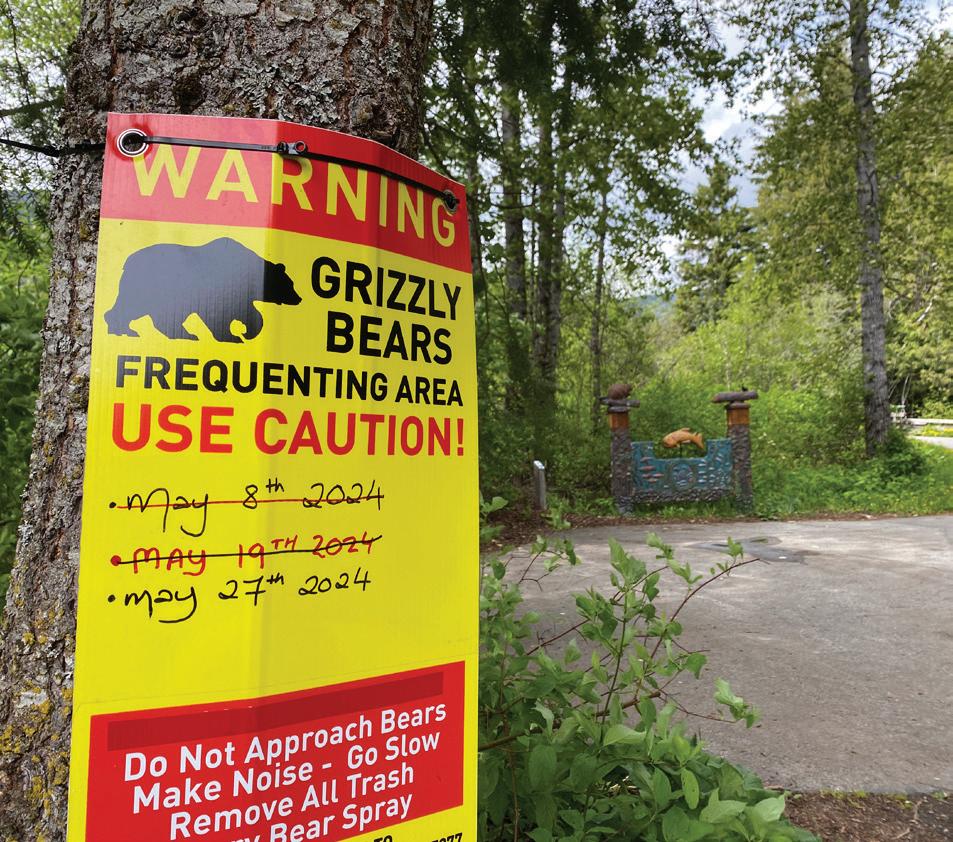









Planning your perfect Whistler wedding?

PICK UP YOUR COPY TODAY!


IN 1971, the alpine program director of the Canadian National Ski Team penned an instructional book for skiers, from beginners to experts. The book was titled Skiing with Al Raine, and was written, as you might have guessed, by Al Raine. It was a continuation of the nationally syndicated newspaper column, “SKIING with Al Raine,” which he began writing in 1969 and, like the other instructional skiing books found in the Whistler Museum’s resource library, was a guide for those looking to improve their skiing long before the internet made such information so easily accessible.
Similar to both Ski with Toni Sailer from 1964 and Greg Athan’s Ski Free from 1978, Skiing with Al Raine offers skiers information about choosing ski equipment, how to prepare the body for skiing, and different techniques for turns and manoeuvres, while also encouraging more formal instruction with a ski instructor. In the introduction, Raine acknowledges there have already been multiple books written about ski technique, but claims most do not emphasize one of the most important parts of learning to ski: “developing your own style.” He also makes a point of knowing when to stop skiing, skipping a run when you are tired, and the importance of taking a hot chocolate or coffee break.
Written specifically for the Canadian skier, Skiing with Al Raine also includes brief descriptions of the different ski areas across the country. Of the Whistler ski area of 1971, it says “Whistler Mountain is certainly
renowned for its Olympic bid, summer skiing potential, tremendous scenery and the honeymoon of Pierre Elliot Trudeau,” and that “each year skiing and skier atmosphere improves greatly.”
Raine and his wife Nancy Greene (1968 Olympic medallist and Canada’s Female Athlete of the 20th Century) moved to the Whistler area in 1973. Raine then became the Ski Area Coordinator for British Columbia, and when the Resort Municipality of Whistler was formed in 1975 was appointed to Whistler’s first council, a position he held until 1982.
The Whistler Museum will be joined by Raine and Drew Meredith (Whistler’s mayor from 1986 to 1990, realtor, and supposed lottery winner of 1982) to discuss not skiing but the origins and early years of the Whistler Resort Association (WRA) on Wednesday, June 12 for our next Speaker Series. The WRA, better known today as Tourism Whistler, began as an amendment to the Resort Municipality of Whistler Act in 1979, a time when major change was happening in the Whistler area. We’re looking forward to learning more about its history and a time when Whistler’s future was, to many, anything but clear.
And on Saturday, June 15, the Whistler Museum will talk skiing with Jim McConkey, who instructed countless people to ski through both the written word and as the director of the Whistler Mountain Ski School. This will be the second screening of 16mm films from the Whistler Museum’s archival collections, which have recently been digitized on new equipment thanks to the Whistler Blackcomb Foundation.
You can find out more about both events at whistlermuseum.org. n
WEEK OF JUNE 7 BY ROB
ARIES (March 21-April 19): What potentials should you strive to ripen as the expansive planet Jupiter glides through your astrological House of Connection, Communication, and Education in the coming months? I’ll offer my intuitions. On the downside, there may be risks of talking carelessly, forging superficial links, and learning inessential lessons. On the plus side, you will generate good luck and abundant vitality if you use language artfully, seek out the finest teachings, and connect with quality people and institutions. In the most favourable prognosis I can imagine, you will become smarter and wiser. Your knack for avoiding boredom and finding fascination will be at a peak.
TAURUS (April 20-May 20): Since 1969, Taurus singersongwriter Willie Nelson has played his favourite guitar in more than 10,000 shows. His name for it is Trigger. Willie doesn’t hold onto it simply for nostalgic reasons. He says it has the greatest tone he has ever heard in a guitar. Though bruised and scratched, it gets a yearly check-up and repair. Nelson regards it as an extension of himself, like a part of his body. Is there anything like Trigger in your life, Taurus? Now is a good time to give it extra care and attention. The same is true for all your valuable belongings and accessories. Give them big doses of love.
GEMINI (May 21-June 20): Off the coast of West Africa is an imaginary place called Null Island. A weather buoy is permanently moored there. Geographers have nicknamed it “Soul Buoy.” It’s the one location on Earth where zero degrees latitude intersects with zero degrees longitude. Since it’s at sea level, its elevation is zero, too. I regard this spot as a fun metaphor for the current state of your destiny, Gemini. You are at a triple zero point, with your innocence almost fully restored. The horizons are wide, the potentials are expansive, and you are as open and free as it’s possible for you to be.
CANCER (June 21-July 22): When I worked as a janitor at India Joze restaurant in Santa Cruz, California, I did the best I could. But I was unskilled in the janitorial arts. I couldn’t fix broken machines and I lacked expertise about effective cleaning agents. Plus, I was lazy. Who could blame me? I wasn’t doing my life’s work. I had no love for my job. Is there an even remotely comparable situation in your life, Cancerian? Are you involved with tasks that neither thrill you nor provide you with useful education? The coming months will be an excellent time to wean yourself from these activities.
LEO (July 23-Aug. 22): I foresee two possible approaches for you in the coming months. Either will probably work, so it’s up to you to decide which feels most fun and interesting. In the first option, you will pursue the rewards you treasure by creating your own rules as you outfox the system’s standard way of doing things. In the second alternative, you will aim for success by mostly playing within the rules of the system except for some ethical scheming and manoeuvring that outflank the system’s rules. My advice is to choose one or the other, and not try to do both.
VIRGO (Aug. 23-Sept. 22): Please note that during the next 12 months, I may seem a bit pushy in my dealings with you. I will encourage you to redefine and enhance your ambitions. I will exhort you to dream bigger. There may come times when you wish I wouldn’t dare you to be so bold. I will understand, then, if you refrain from regularly reading my horoscopes. Maybe you are comfortable with your current type of success and don’t want my cheerleading. But if you would welcome an ally like me—an amiable motivator and sympathetic booster—I will be glad to help you strive for new heights of accomplishment.
LIBRA (Sept. 23-Oct. 22): Three months after Rachel Denning bore her fourth child, she and her husband sold everything they owned and embarked on a nomadic life. They have been roaming ever since, adding three more kids along the way. She says they have become addicted to “the personal transformation that travel extracts.” She
BREZSNYloves how wandering free “causes you to be uncomfortable, to step out of the familiar and into the unknown. It compels you to see with new eyes and to consider things you had never been aware of. It removes preconceptions, biases, and small-mindedness.” If you were ever going to flirt with Rachel Denning’s approach, Libra, the next 12 months would be a favourable time. Could you approximate the same healing growth without globetrotting journeys? Probably. Homework: Ask your imagination to show you appealing ways to expand.
SCORPIO (Oct. 23-Nov. 21): Among the Europeans who first settled in South America were Jews who had been forcibly converted to Christianity by Portuguese and Spanish persecutions. Centuries later, some families resolved to reclaim their Jewish heritage. They led a movement called la sangre llama—a Spanish phrase meaning “the blood is calling.” I invite you to be inspired by this retrieval, Scorpio. The coming months will be an excellent time to commune with aspects of your past that have been neglected or forgotten. Your ancestors may have messages for you. Go in search of missing information about your origins.
SAGITTARIUS (Nov. 22-Dec. 21): If you simply let the natural flow take you where it will in the coming weeks, you would become a magnet for both degenerative and creative influences. Fortunately, you are reading this oracle, which will help ensure the natural flow won’t lead you toward degenerative influences. With this timely oracle, I am advising you to monitor and suppress any unconscious attractions you might have for bewildering risks and seemingly interesting possibilities that are actually dead ends. Don’t flirt with decadent glamour or fake beauty, dear Sagittarius! Instead, make yourself fully available for only the best resources that will uplift and inspire you.
CAPRICORN (Dec. 22-Jan. 19): Capricorn politician Robert F. Kennedy Jr. is campaigning to be U.S. President. But oops: He recently confessed that a parasitic worm once ate a portion of his brain, damaging his memory and cognitive skills. “The worm is dead now,” he assured us, as if that were a good reason to vote for him. Why am I bringing this up? Like most of us, you have secrets that if revealed might wreak at least a bit of mayhem. As tempting as it might be to share them with the world—perhaps in an effort to feel free of their burden—it’s best to keep them hidden for now. Kennedy’s brain worm is in that category. Don’t be like him in the coming weeks. Keep your reputation and public image strong. Show your best facets to the world.
AQUARIUS (Jan. 20-Feb. 18): The English and French word “amateur” comes from amatus, the past participle of the Latin word amare, which means “to love.” According to one definition, an amateur is “someone who pursues sports, studies, or other activities purely for pleasure instead of for financial gain or professional advancement.” In accordance with astrological omens, I encourage you to make this a featured theme in the coming months. On a regular basis, seek out experiences simply because they make you feel good. Engage in lots of playtime. At least part-time, specialize in fun and games.
PISCES (Feb. 19-March 20): Good news, Pisces: In the coming weeks, one of your flaws will mysteriously become less flawed. It will lose some of its power to undermine you. If you engage in focused meditation about it, you could rob it of even more of its obstructive force. More good news: You will have an enhanced capacity to distinguish between skilful pretending and earthy authenticity. No one can trick you or fool you. Can you handle even more good news? You will have a skilful knack for finding imperfect but effective solutions to problems that have no perfect solution.
Homework: What mediocre pleasure could you give up to better pursue a sublime pleasure? Newsletter. FreeWillAstrology.com.
In addition to this column, Rob Brezsny creates
In-depth weekly forecasts designed to inspire and uplift you. To buy access, phone 1-888-499-4425. Once you’ve chosen the Block of Time you like, call 1-888-682-8777 to hear Rob’s forecasts. www.freewillastrology.com










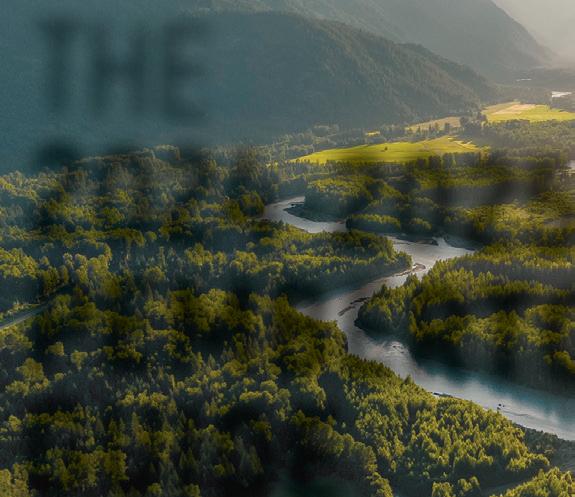







Î
Î
Î
Î
Furnishedstudioattheglen AvailJuly1,1300/mplusUtilities, suitablefor1person,includeshare laundry,cableavail,n/smoking, N/pet.Textshirley6049359421


Fairmont Chateau
Whistler Resort is growing its Housing portfolio and sourcing additional Chalet and Condo Rental contracts for our Hotel Team Members. Our leaders are mature, career driven drivers that know the word respect. Contract terms for property Owners are stress free with no commissions and includes representation from our 4 person fulltime Housing Department working with you 24/7; maintaining all aspects of the tenancy including quarterly inspections. A great next move for Whistler property Owners that have tired with the Airbnb game or Property Fees. Let’s see if we can make a match and develop a long-term relationship here. General inquiries please email mark.munn@fairmont.com
WHISTLERPERSONNEL CAREEROPPORTUNITIES
Letushelpyoufindyourperfect careerorextrasidehustle. www.whistler-jobs.com/job-board
WHISTLERPERSONNEL SOLUTIONS Findyournextcareerorperfect side-hustle. www.whistler-jobs.com/job-board
Goldnearthevillage.Strong,ableto maintainconsistentworkpace throughouttheday.Doesnotneedto be5daysperweek.Canbeparttime ifpreferred.Thisisacasualposition andyouwillberesponsibleforyour owntaxesandnotanemployeeofthe company.Subcontractwork.$25$40/hourdependingonskills
SquamishRegionalDirectorof SalesSquamishandWhistler
SUMMARY:Thispositionwill overseethesalesactivitiesatthe SquamishandWhistlerproperties. TheRegionalDirectorofSaleswill beaccountableformanagingthe hotelsales,cateringandoverall revenuegeneratingefforts;aswell astheplanningand implementationofsalesand activitiestoaccomplish organizationalgoals.Office locatedinSquamishHotel.Base salaryplusadditionalincentive programandfullmedicalbenefits. www.executivesuitessquamish.co m
piquenewsmagazine.com/ local-events/ www.whistlerwag.com































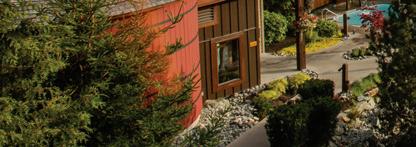




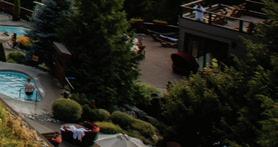





The Museum is currently seeking:

Coordinate all aspects of the Permanent Collection and Special Exhibitions, including registration, maintenance, security, records, and assisting with research and exhibition development.
• Permanent, Full-Time
• $55,000 - $60,000
• Health Benefits
• Transit Allowance
• Wellness Benefit

Apply and learn more via the QR code, or email applications to bbeacom@audainartmuseum.com

TEPPAN VILLAGE IS HIRING A GENERAL MANAGER Teppan Village is a locally owned Teppanyaki Steakhouse
RESPONSIBILITIES INCLUDE:
• Overseeing daily operations
• Addressing areas of improvement
• Responding to customer service needs
• Insuring team member satisfaction
• Monitoring staff performance and scheduling.
THE PERFECT CANDIDATE:
• Minimum 4-5 years management experience in a high volume food and beverage environment
• Manage reservations systems
• Strong problem-solving abilities
• Excellent leadership, organization, and time management skills.
• Ability to develop and motivate staff to achieve challenging goals. ABOUT THE ROLE, BENEFITS +PERKS
• Full-time, year-round career opportunity.
• Competitive wage
• Annual mountain pass.
• Free meals and restaurant discounts.
• Educational allowance & growth opportunities.
• Extended health, dental and vision benefits
• Paid vacation time Address: 301-4293 Mountain Square, Whistler, BC, V0N 1B4 Apply by email at teppanvillage@shaw.ca




Full Time Assistant Meat Manager
($64,480 – $72,800 (+ benefits) depending on experience)
Full Time Meat Wrapper
($17.40/hr - $22/hr (+ 20% discount card& benefits) for full time staff)
Full Time Grocery Clerk
($17.40/hr - $21.50/hr (+ 20% discount card& benefits) for full time staff)
Part Time Cleaner ($19/hr - $24/hr)
Our Team enjoys:
ü Flexible schedules ü Training and experience
ü Full Benefits & Employee Discount Card
ü Prime location in Pemberton
ü Short commute = less time, more $$$
Download or fill out our online application at https://www.pembertonsupermarket.com/ about/employment/ or stop by the store and we will give you an application to fill out. You can also email us at jobs@pembertonsupermarket.com or call us at 604-894-3663.


•
•
• Receptionist ($17.40 to $20.90 per hour)
• Housing Administrator
•
per year)
• Elementary School Teacher: Grade 3 ($60,015.00 to $109,520.00 per year)
• Educational Counsellor/ Teacher ($60,015.00 to $109,520.00 per year)
• High School English Teacher ($60,015.00 to $109,520.00 per year)
• High School English and Humanities Teacher ($60,015.00 to $109,520.00 per year)
• Language Resource Worker or Language Teacher ($46,683- $63,973 per year)
Lil’wat Health & Healing
• Nurse Manager ($85,685.60- $117,280.80 per year)
Lil’wat Business Group
• Cashier ($17.40 to $18.50 per hour)
• Junior Saw Labourer ($19.00 to $24.00 per hour)
• Senior Saw Labourer ($23.00 to $29.00 per hour)







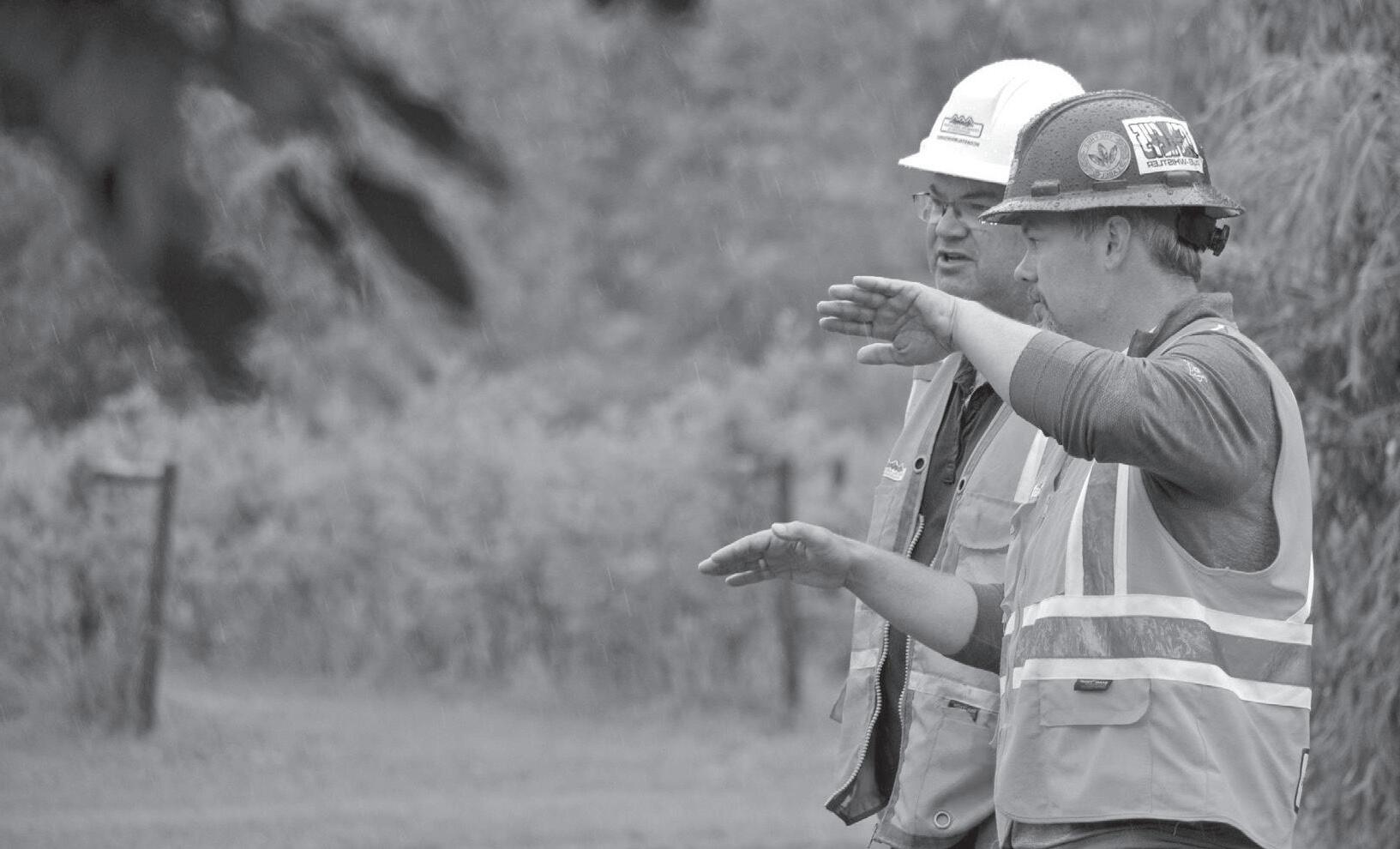

TRUCK


































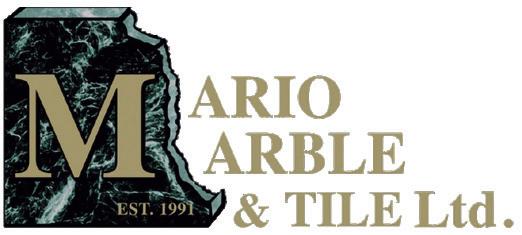
JUNE 24, 2016 was the first time I dared to imagine the unnameable Orange Monster might become president of the U.S. That was the day after enough voters in the United Kingdom cast ballots in favour of leaving the European Union.
 BY G.D. MAXWELL
BY G.D. MAXWELL
I thought if enough Brits were willing to shoot themselves in both feet there may well be enough Americans willing to elect a grifter and con artist president.
The last time I took heart in reading anything with his name in it was Nov. 3, 2020, when Joe Biden “stole” the presidency from him.
Until last week.
Guilty. Guilty. Guilty. Thirty-four times over, guilty. Every count under consideration. Guilty. Astonishing. Unexpected. Very welcomed.
I believed the OM when, years ago, he said he could shoot someone dead in Times Square and not be found guilty. I was certain at least one member of the jury was a MAGAcite. A true believer. I never believed 12 people who’d survived voir dire, pre-emptory challenges and challenges for cause would reach a unanimous verdict on any of the counts being tried, given the defendant.
Unanimity is a high hurdle to jump. Huge. Higher than “reasonable doubt.” Especially in the era of disaffected antisocial media. There’s almost nothing I read anymore I don’t have a reasonable doubt about.
When I was a new lawyer, time permitting I’d wander across the street and watch trials. Criminal, civil, I’d watch them like the theatre they are. Inevitably, if the lawyers were doing a reasonable job, I’d have a feeling after the prosecutor or plaintiff’s counsel presented their case there was no doubt about guilt or liability. Until the defence put on their case. Then I wouldn’t be so sure.
So for 12 people to sit through days of testimony—not to mention the glower of the OM sulking at the defence table—to sit through closing arguments, to listen carefully to the judge’s instructions regarding the law to be applied, to argue amongst themselves for a day and a half and to come away with unanimous agreement on 34 individual counts is testament to the underlying strength of the legal system. People listened; people weighed their verdict.
Yeah, sometimes it works. More often than not.
The guilty person’s reaction was predictable. He said the trial was a disgrace. It was rigged. The judge was corrupt. It was a conspiracy of the Biden administration. He was innocent. Pure as the driven snow. After all, he considers himself infallible. Any loss is obviously the result of a rigged trial, a stolen election, a conspiracy at the highest levels.
In the time before the country lost its moral bearing, any politician found guilty of 34 felonies would have mumbled some contrite words and stepped out of the

limelight. Resigned. Retired in disgrace. Hell, even Nixon, while underscoring he was no crook, had enough remnants of morality and shame to retire rather than face impeachment.
But the Orange Monster marches on, leading his coterie of sycophants to new territory of depravity. Well, not new, just new to the country that has always paid boastful lip service to democratic principles.
The heavy hitters of the Republican Party lined up to parrot their leader. One after another took aim at the legal system, excoriating it, sure to undermine any remaining belief among the population that
republic.
Their rhetoric not only undermines the justice system, it undermines the very bodies in which they serve, or pervert as the case may be. All politics is bad politics... unless it’s controlled by us and serves our own ends.
And the MAGA bobbleheads nod in agreement, mouths open, knuckles dragging. The OM is their man. What they aspire to be. Thugs. None were heard to chant, “Lock him up!”
In their brave new world of truthless truth, there is a back door where the federal justice department and the office of the president
The irony is rife. The victim of this injustice, the OM, is the very person who tried so hard during his term in office to turn the justice department into his private hit team…
fairness and justice could be found in the courtroom. They chimed in, repeating it was orchestrated by the Biden administration and the justice department. Reinforcing the foundation for disbelief in anything but conspiracy theories.
The irony is rife. The victim of this injustice, the OM, is the very person who tried so hard during his term in office to turn the justice department into his private hit team and has vowed to do so successfully if he’s elected in November. Packed with loyalists who will seek retribution against his enemies, real or perceived. Like any tinpot dictator of a
exercises the power to direct a Manhattan district attorney to bring a criminal action against a former president in a state court. It takes a bottomless void of misunderstanding about the way things work to believe that’s the case.
But these are the people who still buy the myth of the stolen election, despite investigation after investigation failing to uncover any theft. They conveniently overlook the wannabe dictator-in-chief calling the Georgia Secretary of State and imploring him for an hour to find enough “votes” to put him over the top in that state. Because, after
all, the infallible can’t possibly lose. Right?
If there is light in this nightmarish tunnel it’s the growing sense among sentient Republican voters that maybe, just maybe, the OM isn’t the right monster for the job after all. The reality of voting for a convicted felon for the highest office in the country, the putative leader of the free world, is beginning to taste like vomit bubbling up their throats.
A poll before the verdicts were rendered showed no meaningful change in voters’ preferences by party. And, inexplicably, some percentage of Republican voters who would be more likely to vote for the OM if he were convicted.
More recent polls are showing a measurable decline in voters who are comfortable voting for a corrupt, convicted, con man... again.
I have just enough hope in the incremental humanity of people in my former home to think it might be possible to exorcise this insufferable fool from public life, recognizing it will take a generation or more to rid the country of the stink he leaves behind, assuming things don’t actually get worse with the upcoming generation of hard-right Republicans foaming at the mouth to take his place.
I have slightly more hope the epidemic of self-righteous, egocentric corruption fails to gain more traction than it already has on this side of the border. Whether the people in the U.S. and Canada prove me right or wrong matters only academically to me. I’m old enough to ride out the insanity. But I weep for the ones of tender years. They’ll have to live with or live down this dark chapter for much of the rest of their lives. n
banana





